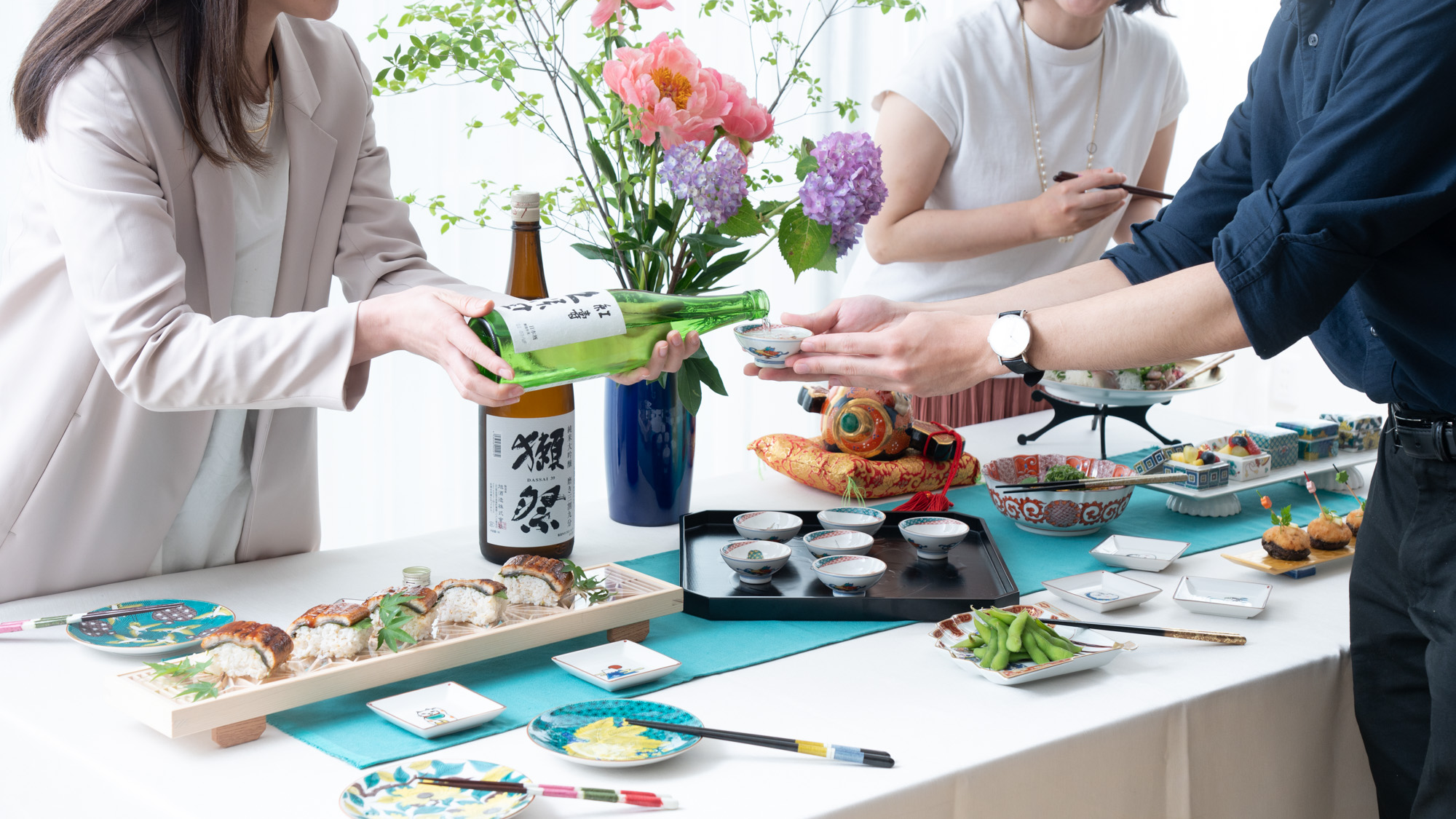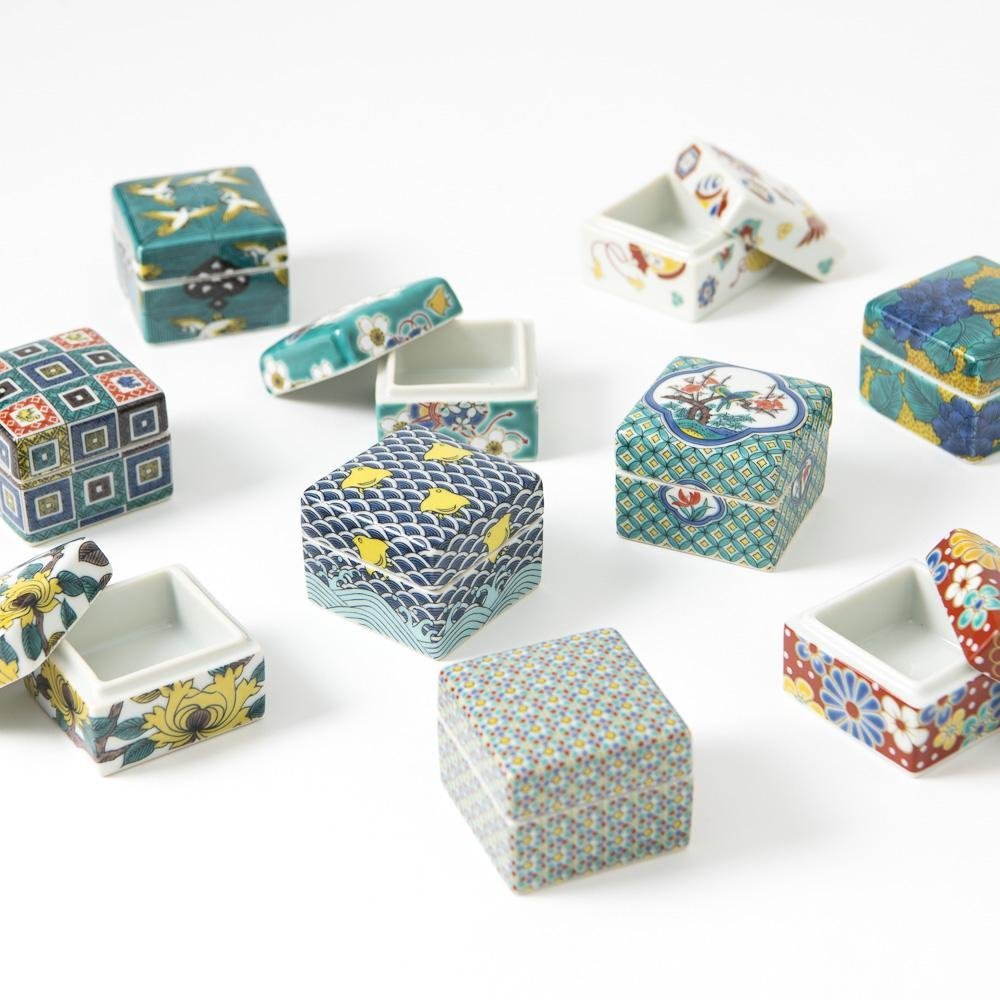
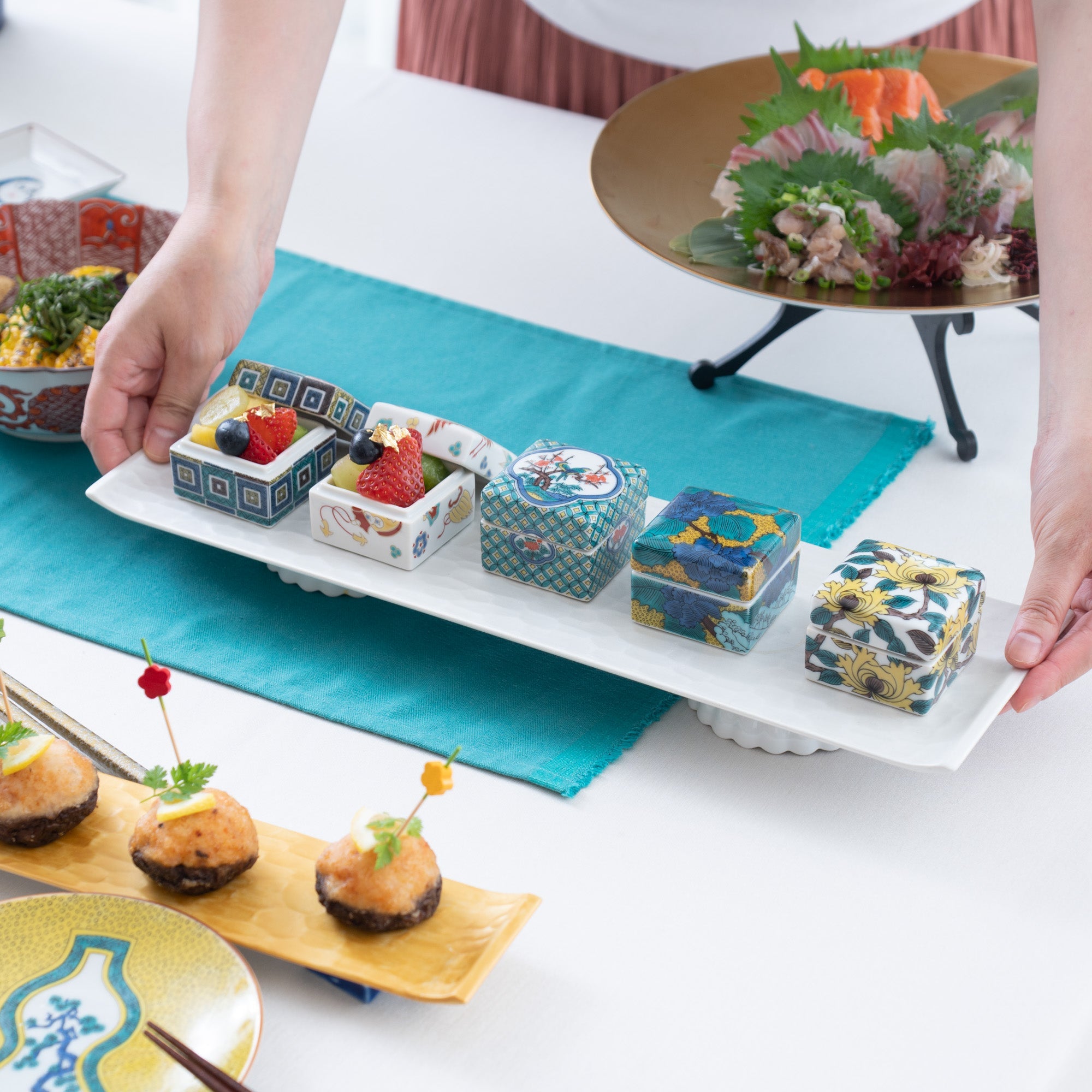
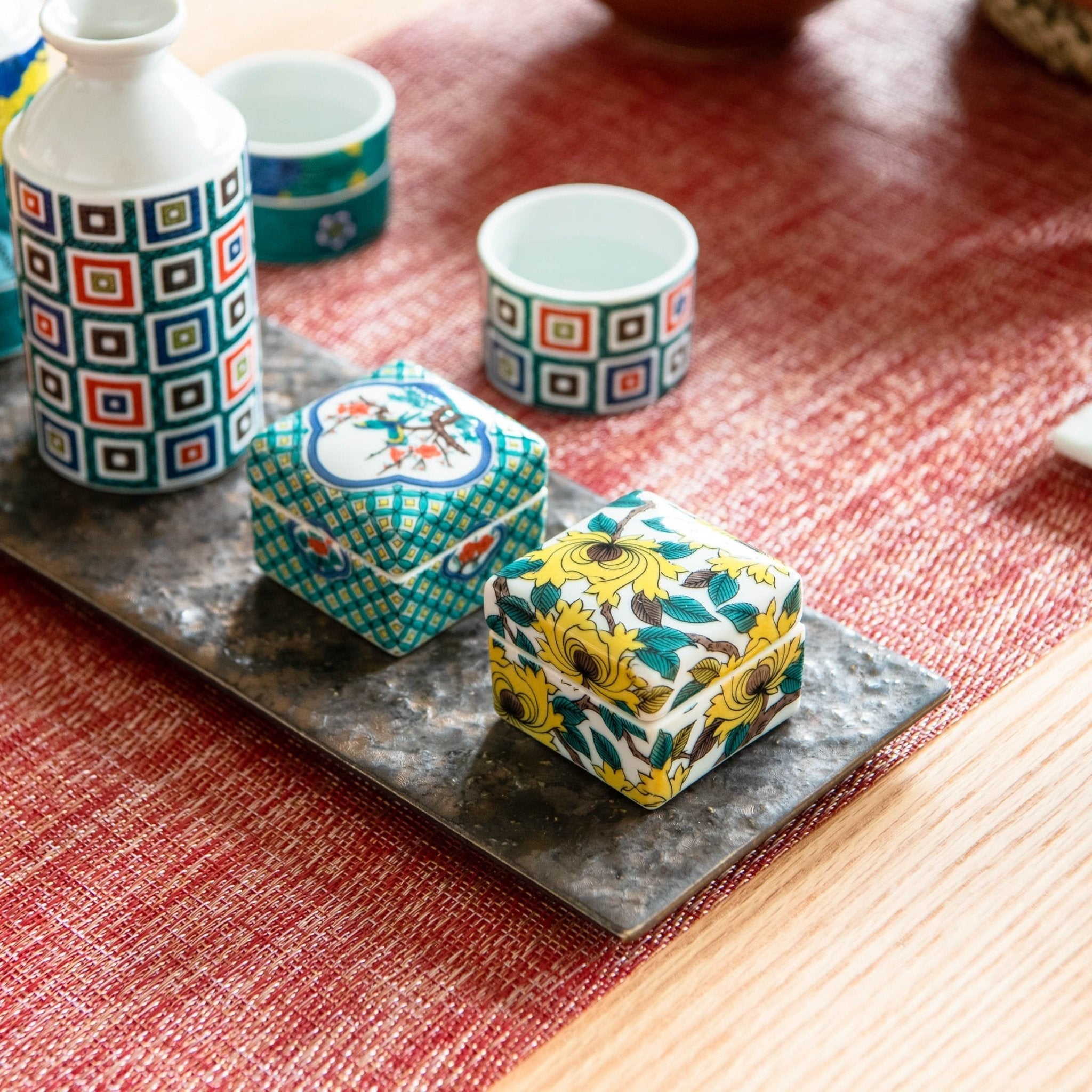
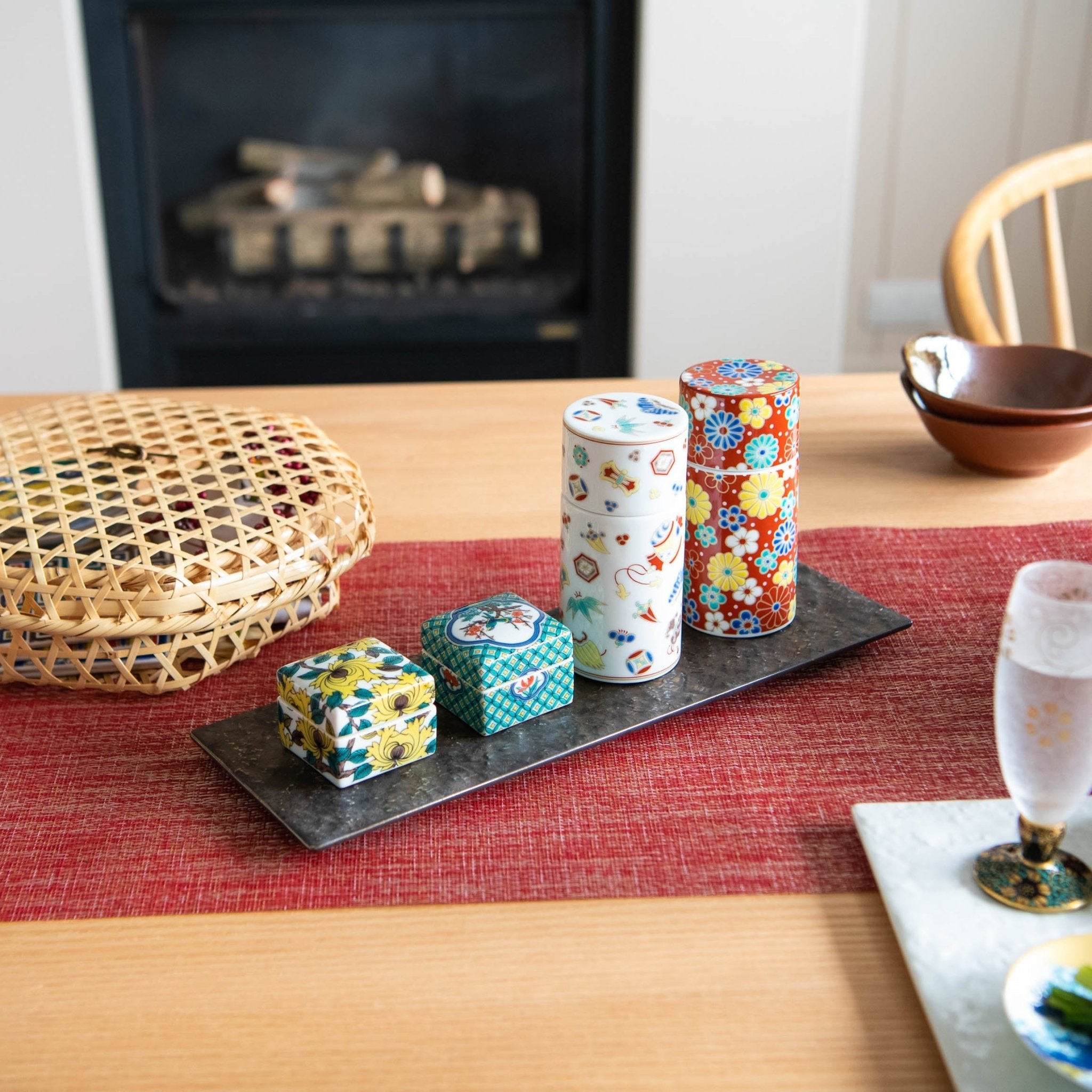
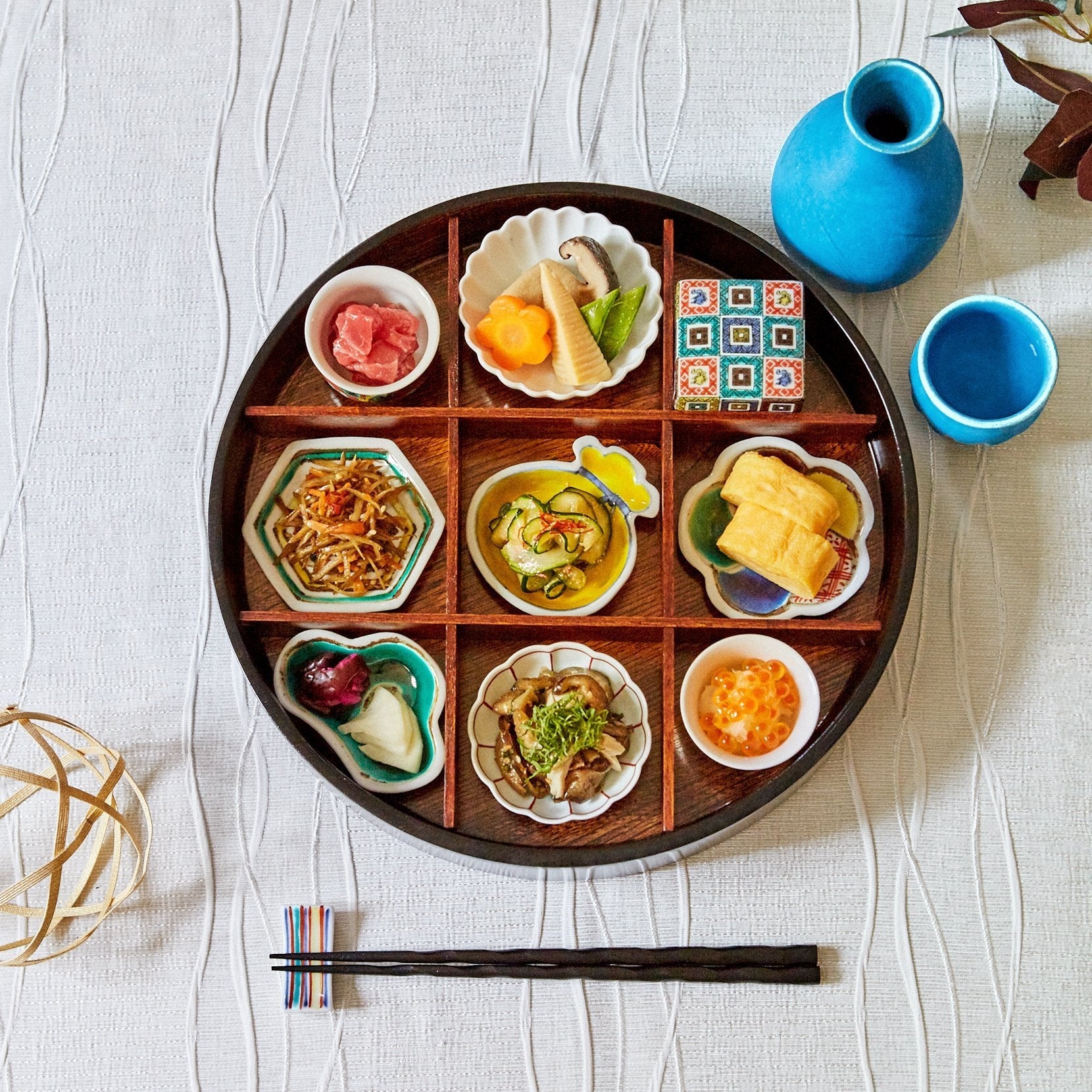
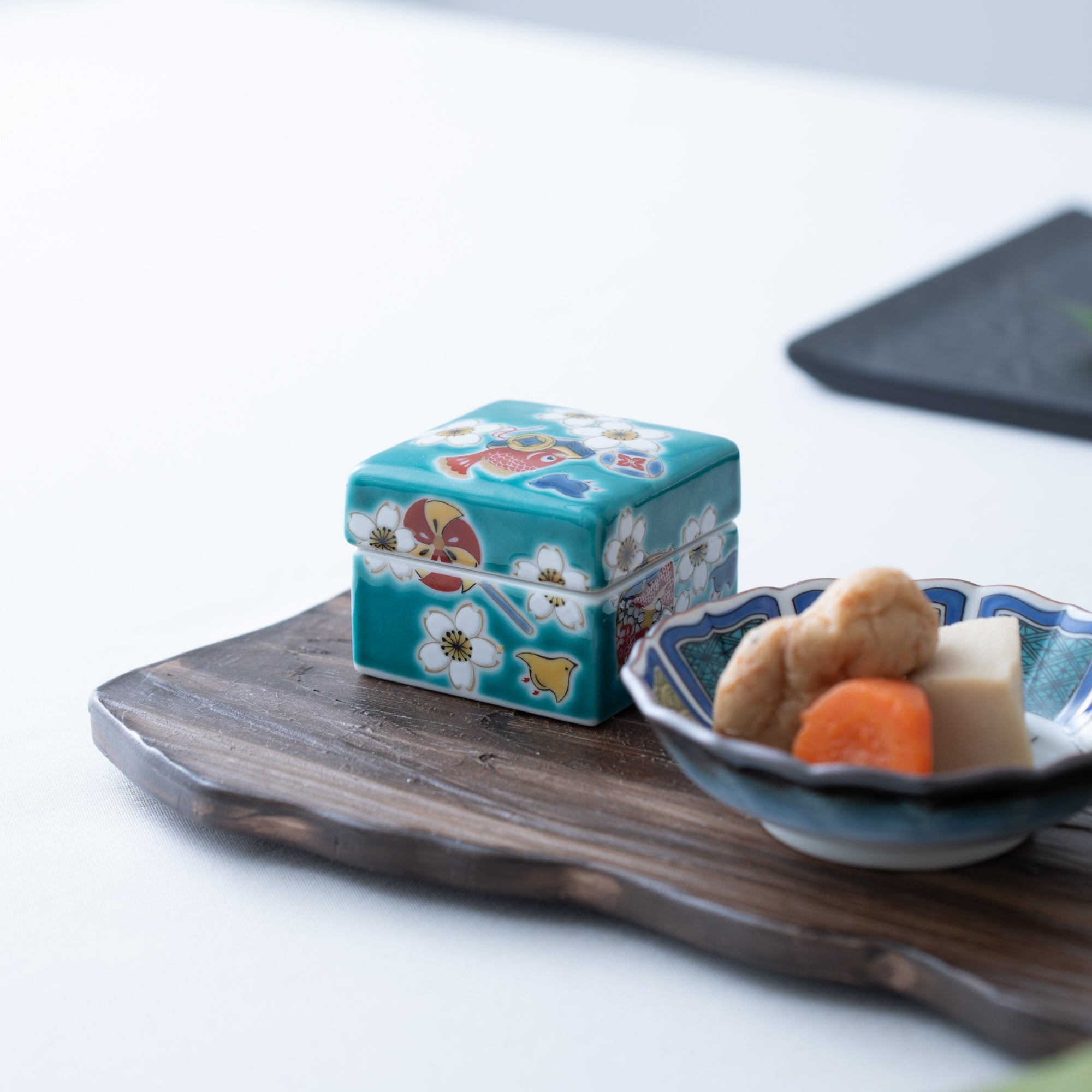
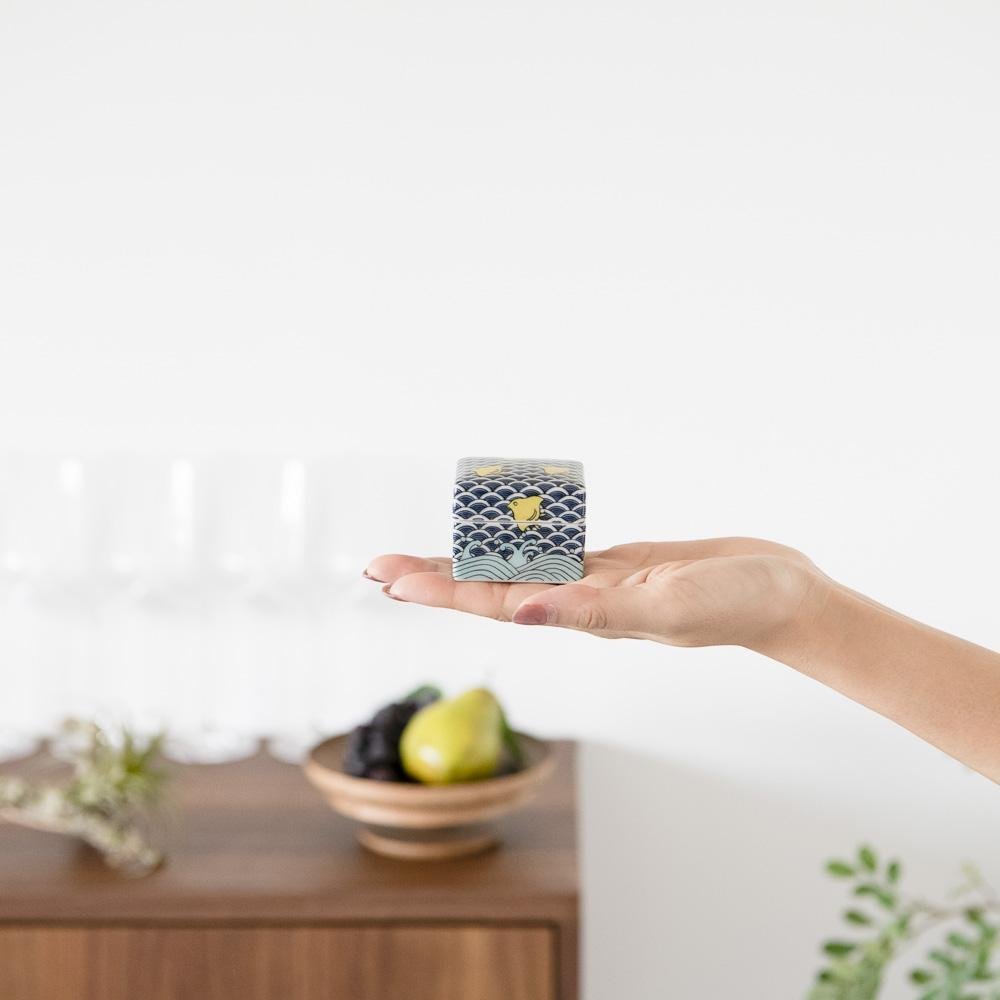
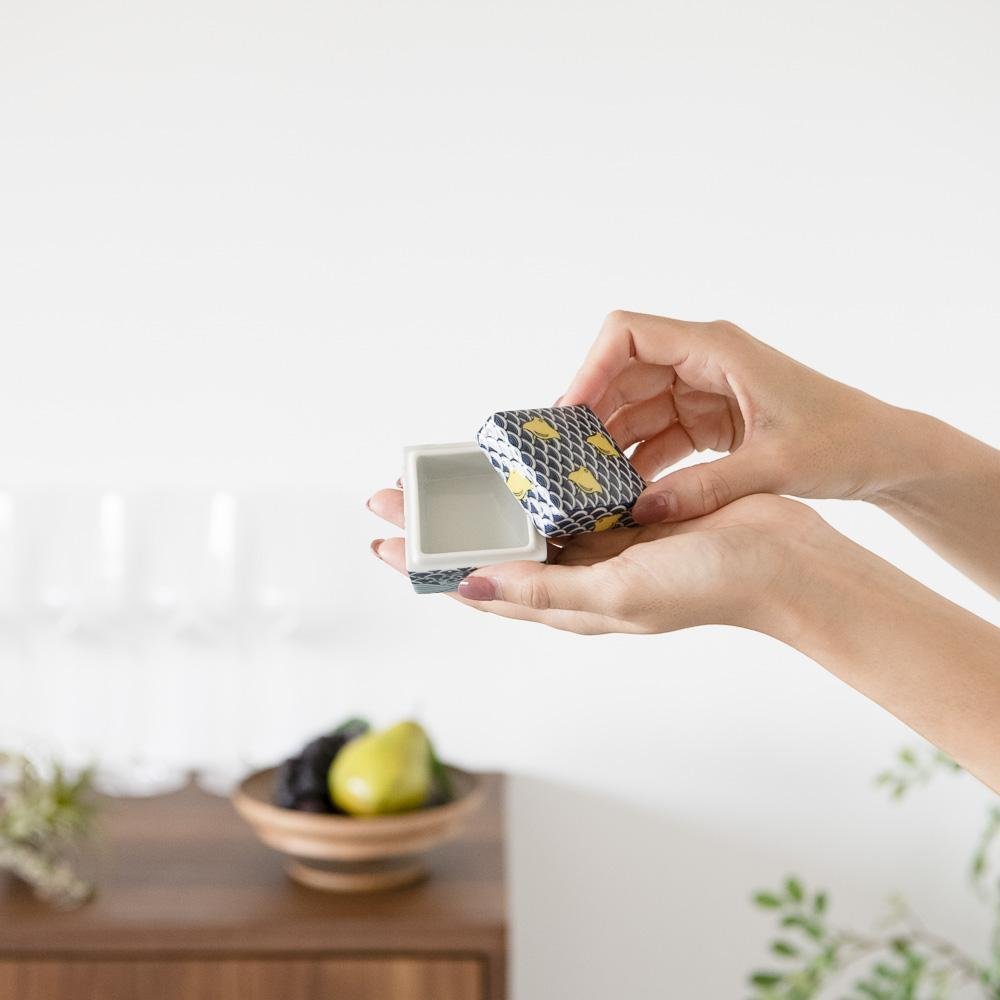
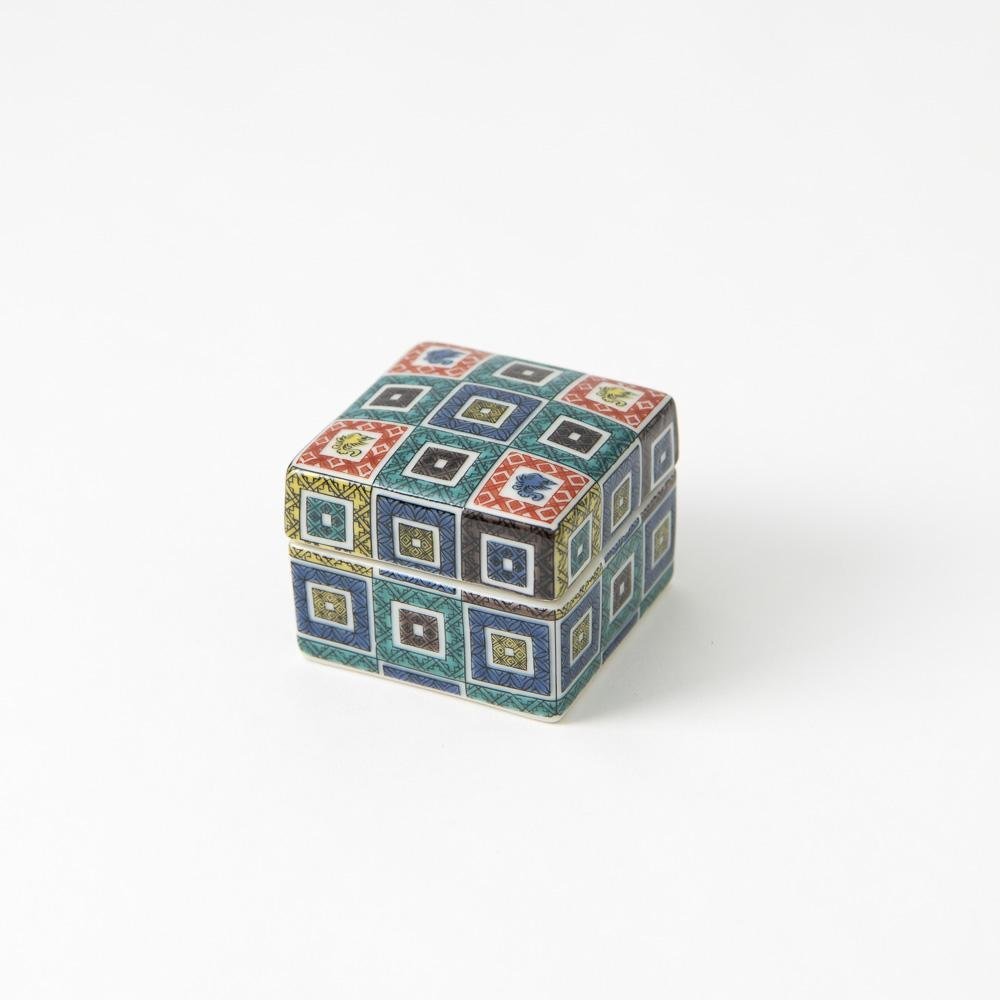
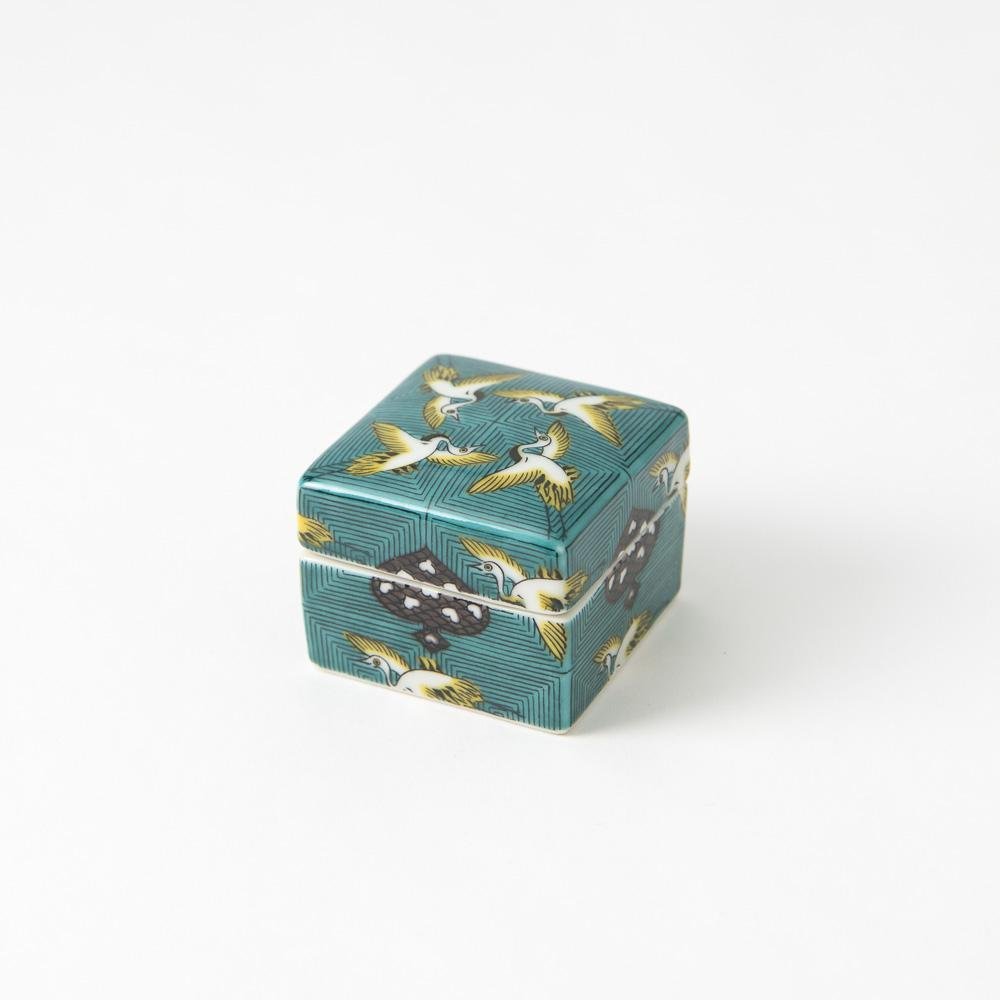
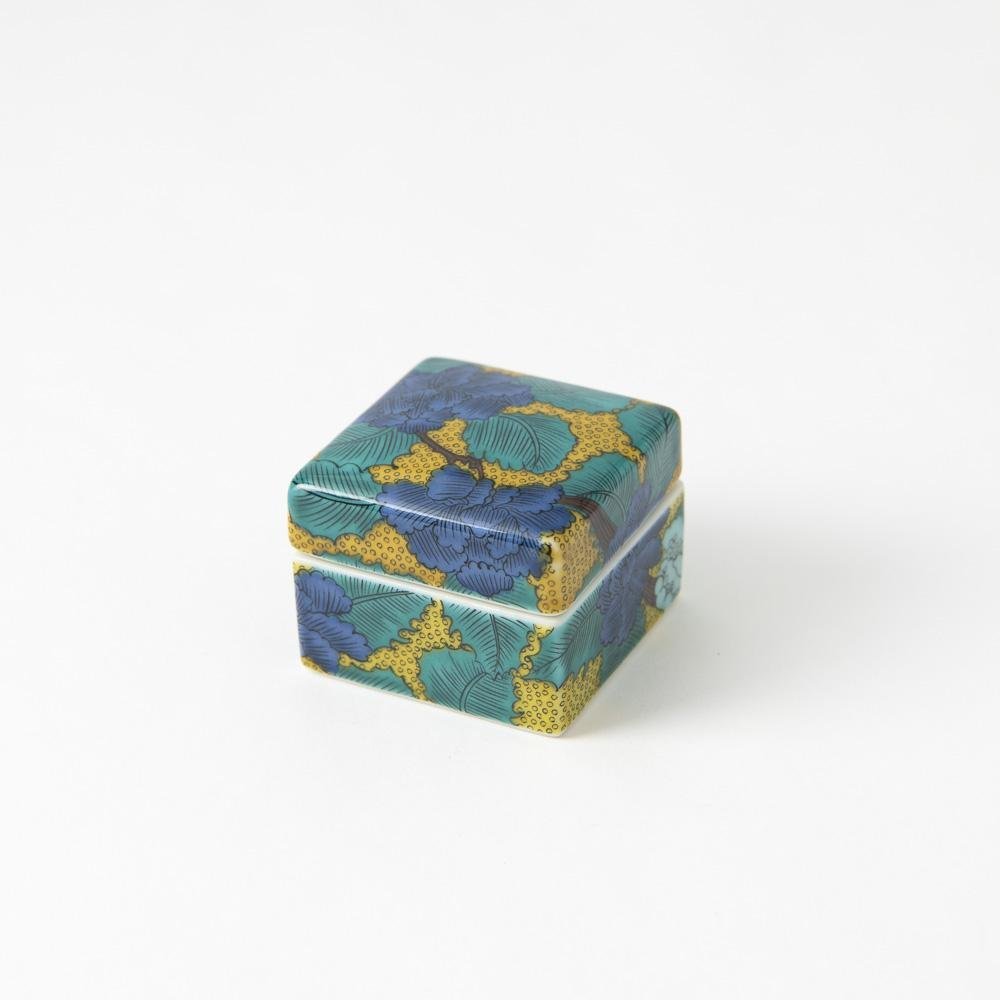
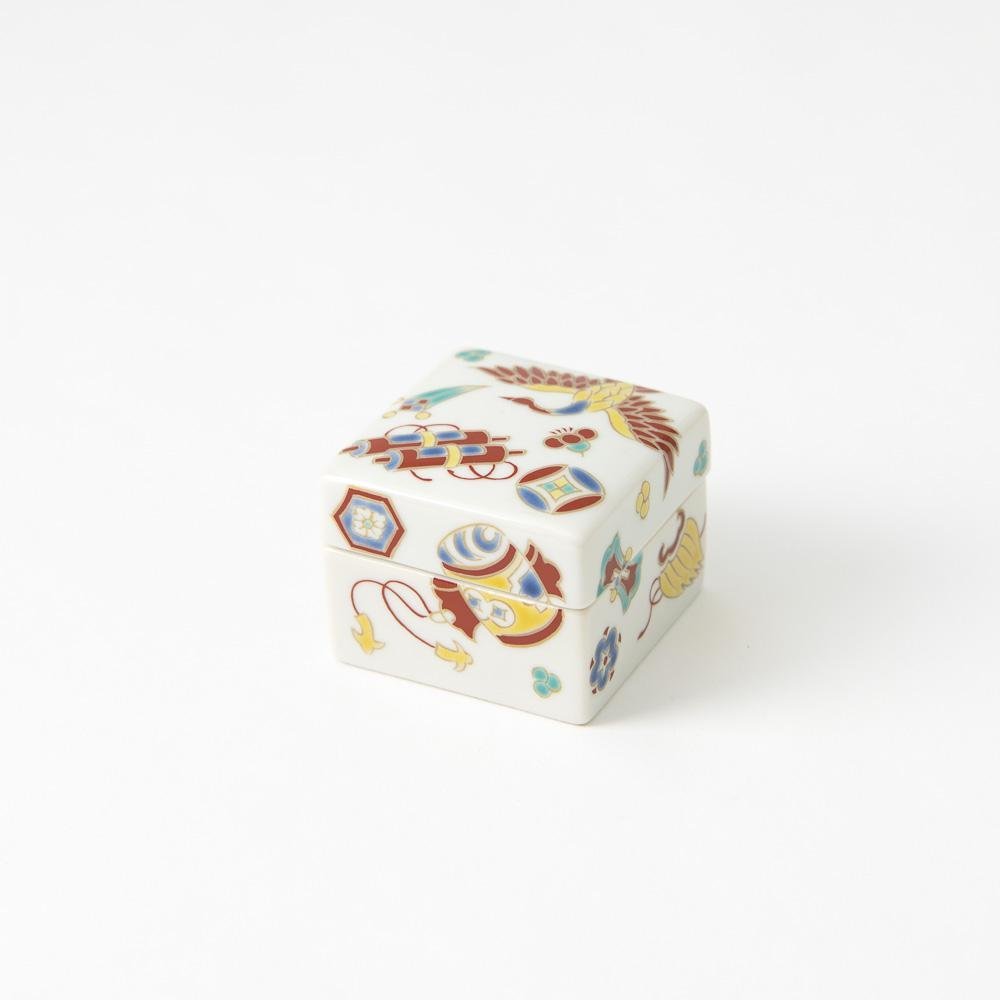
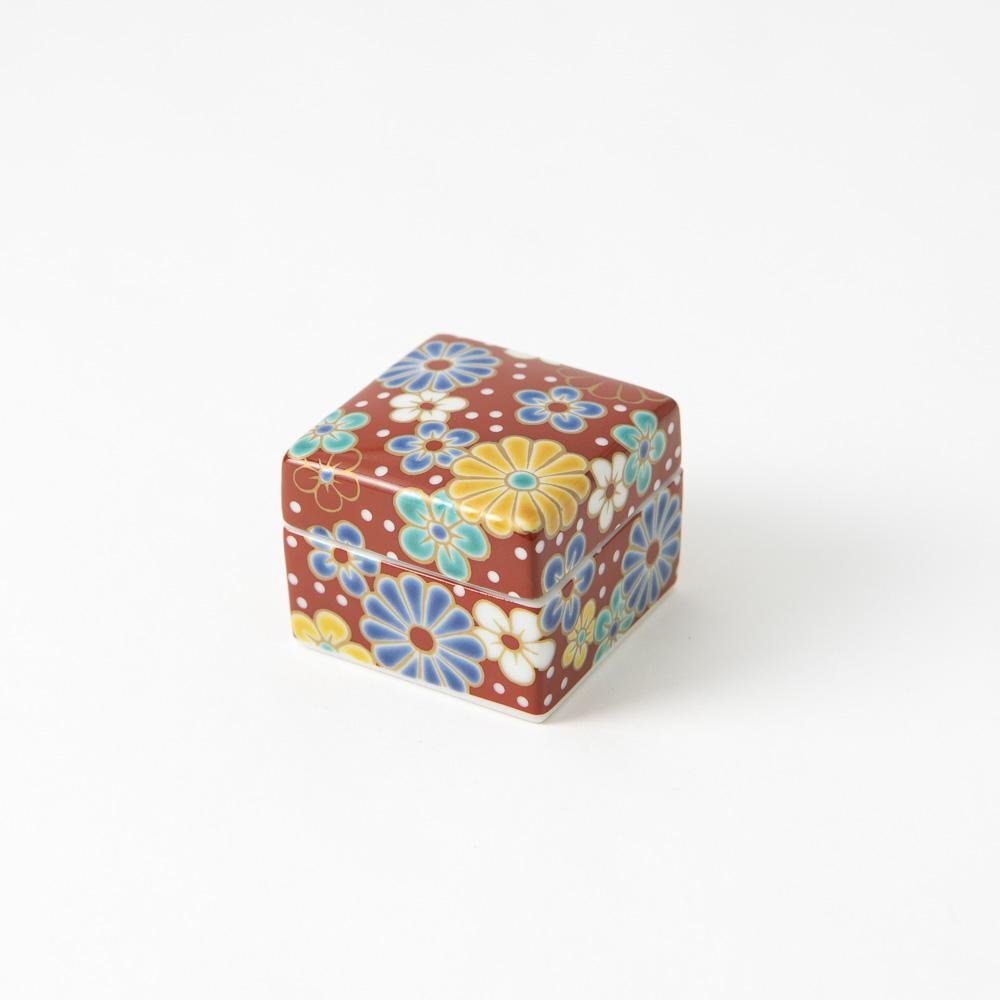
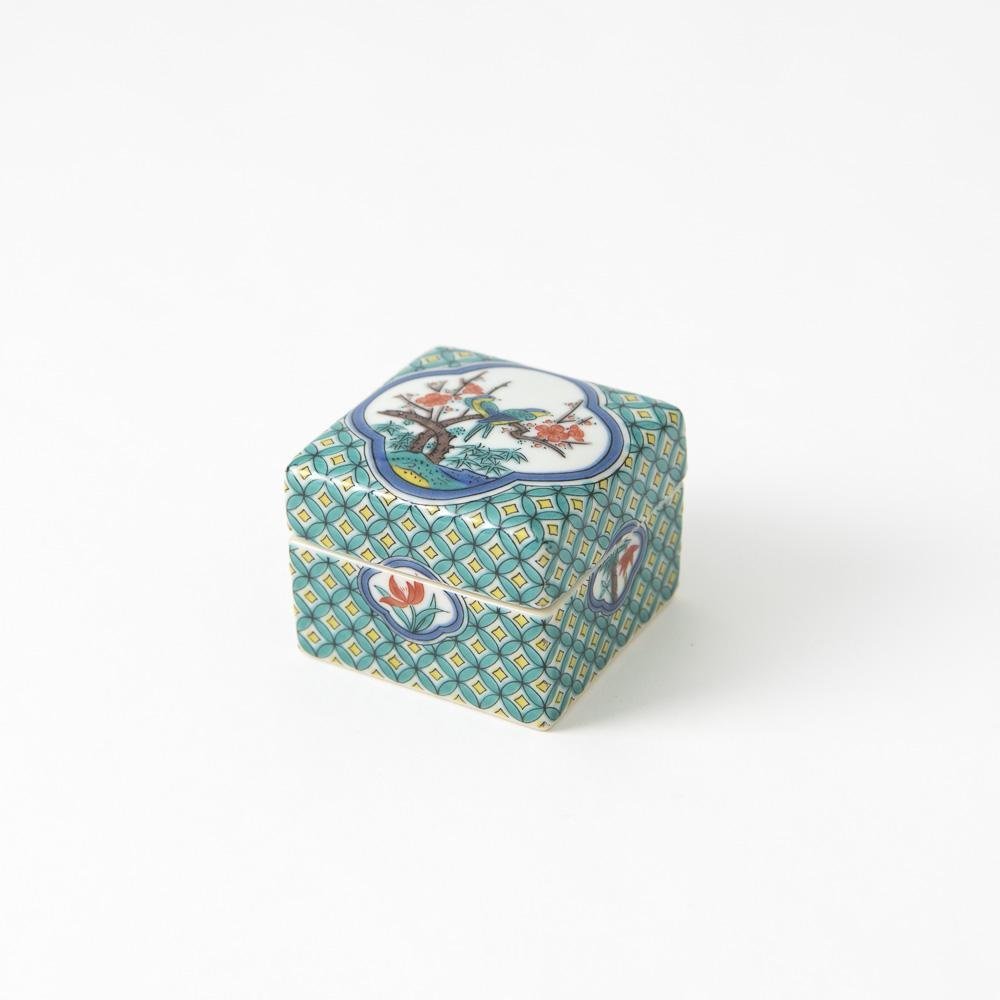
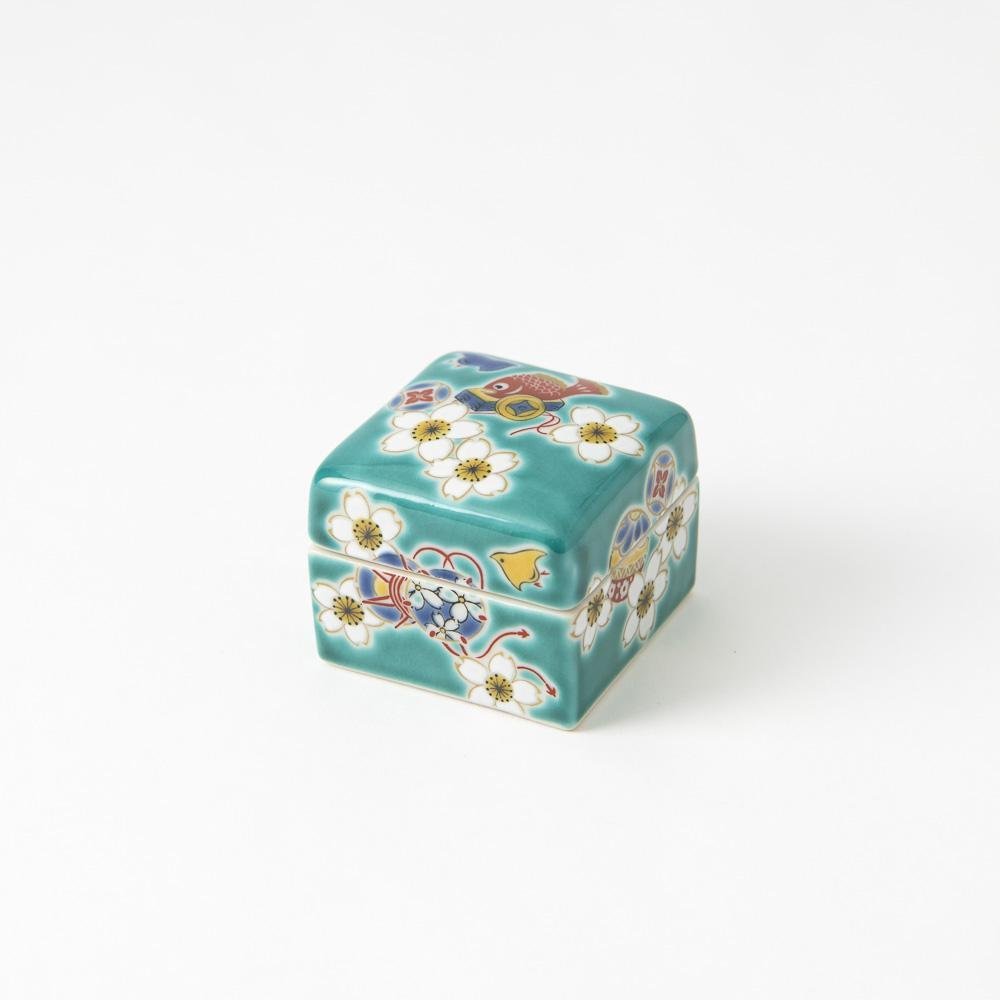
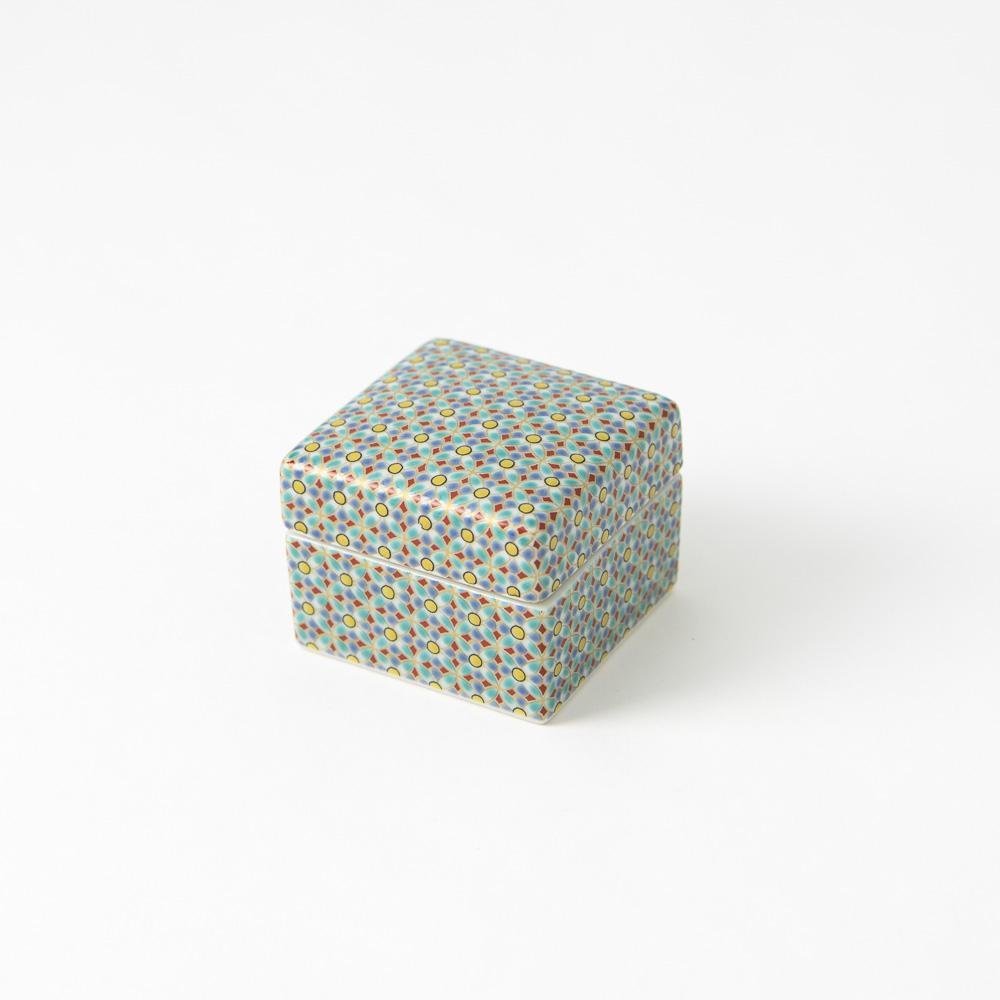
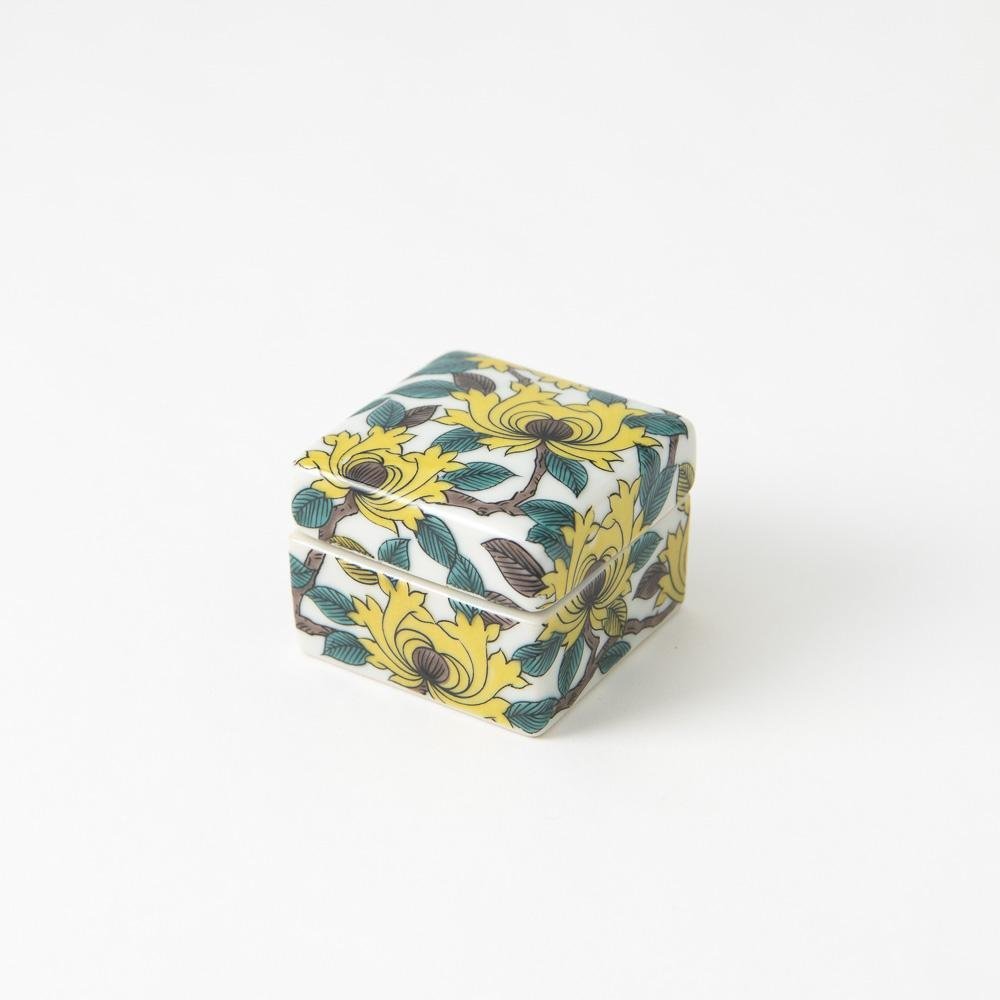
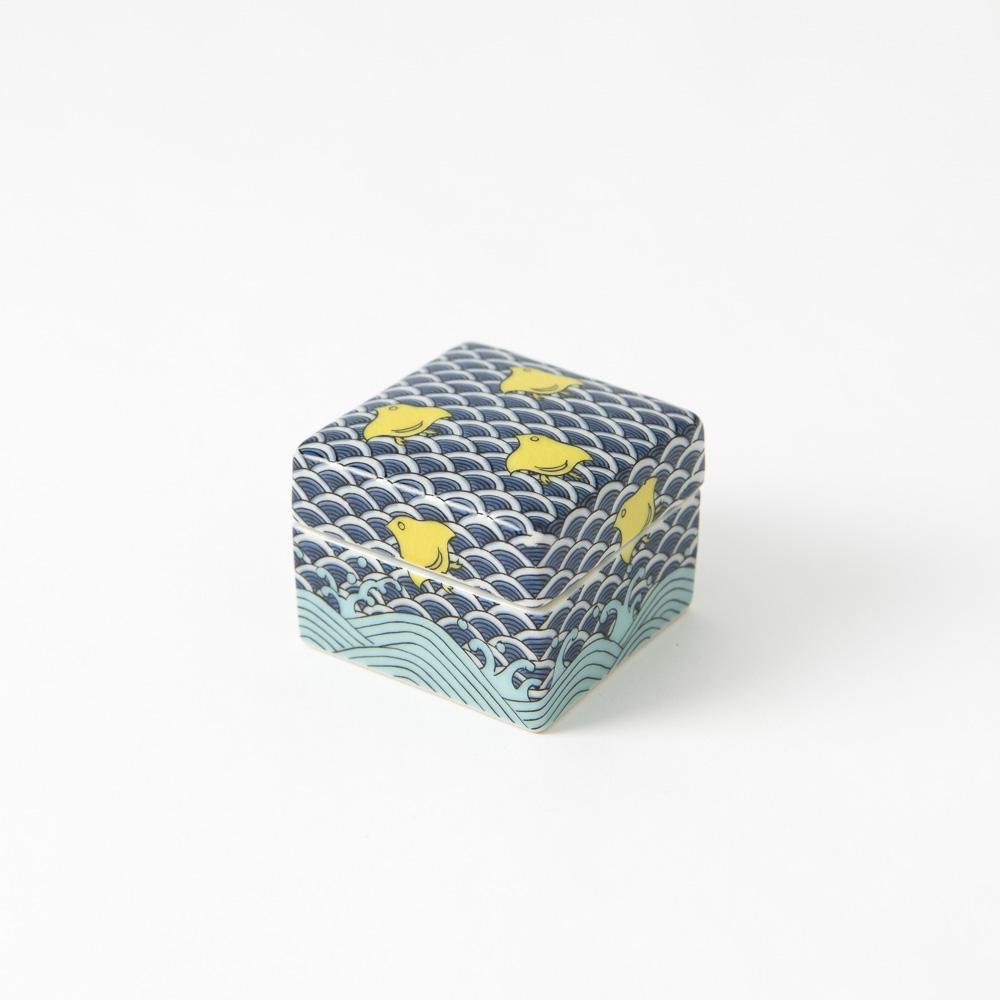
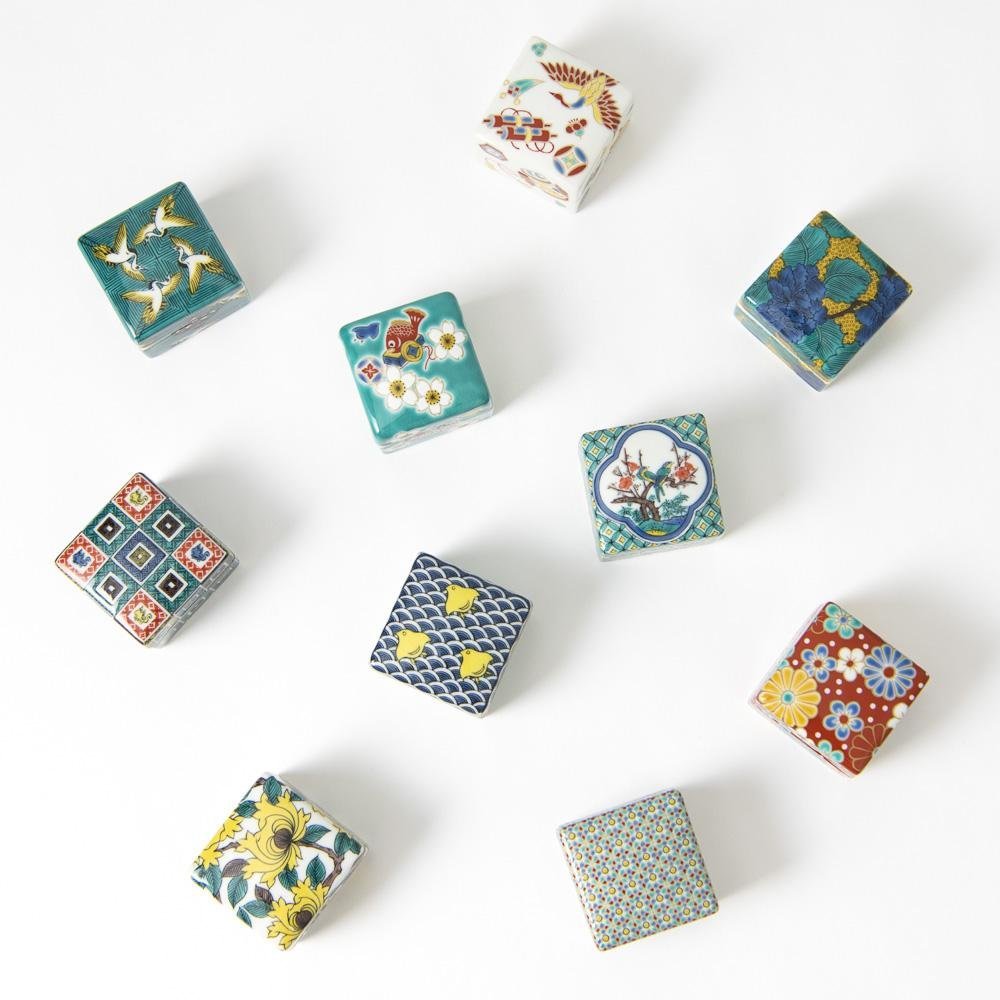
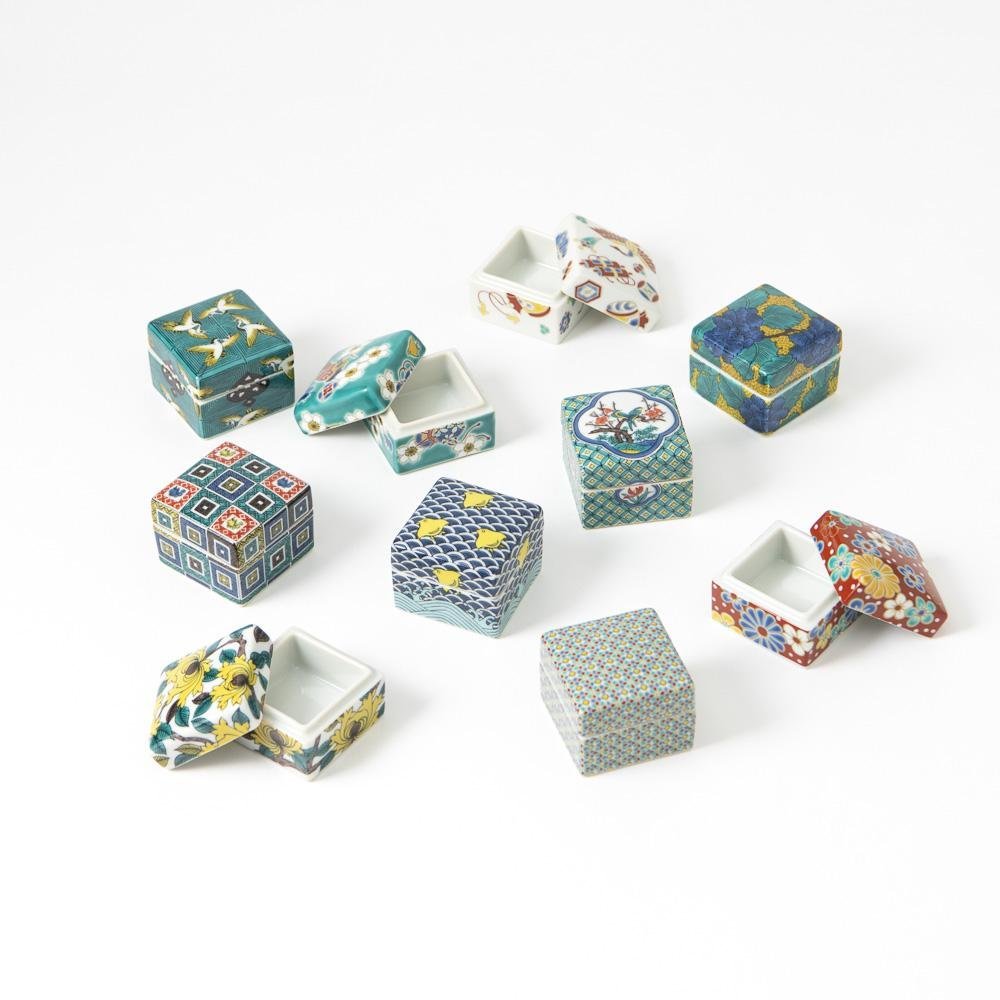
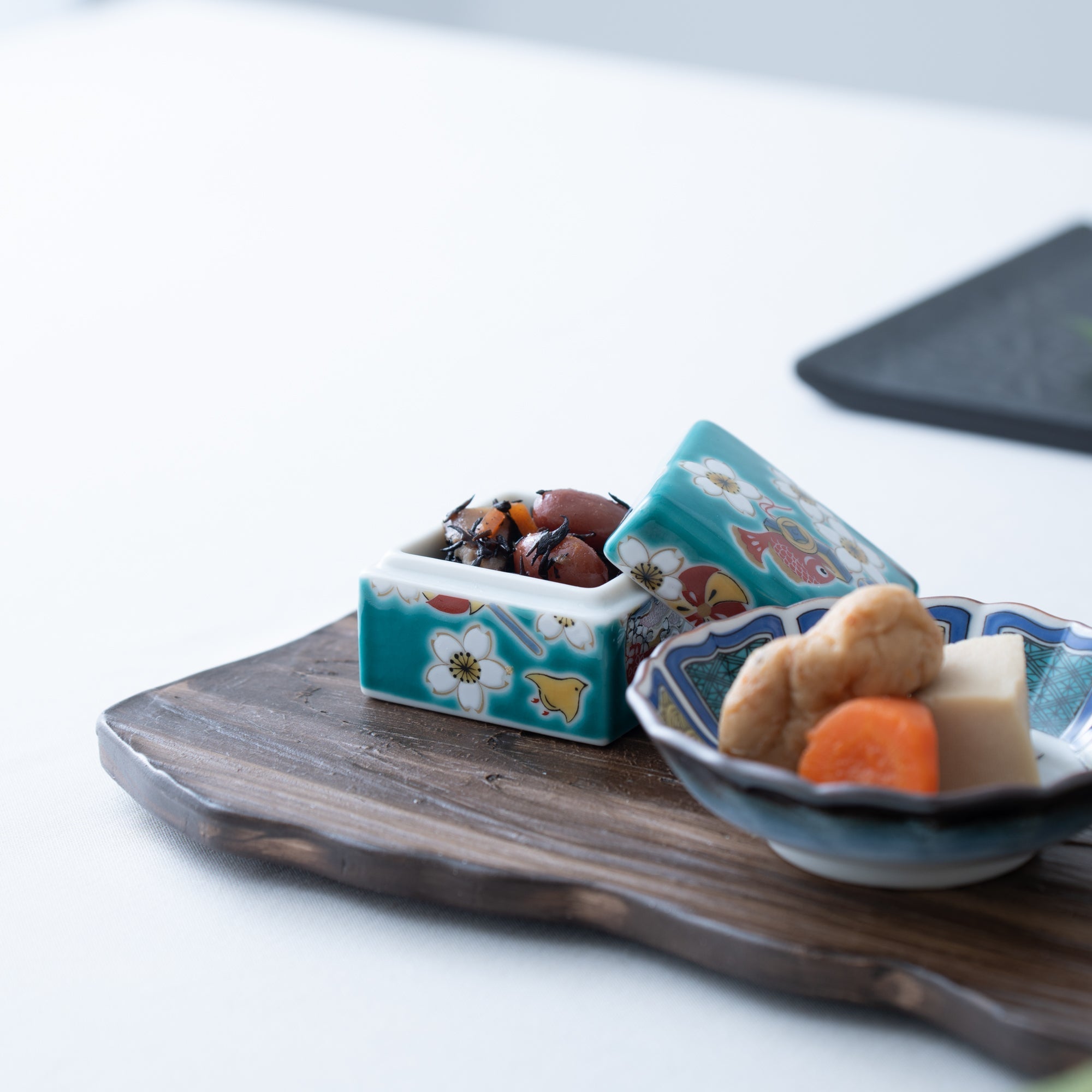
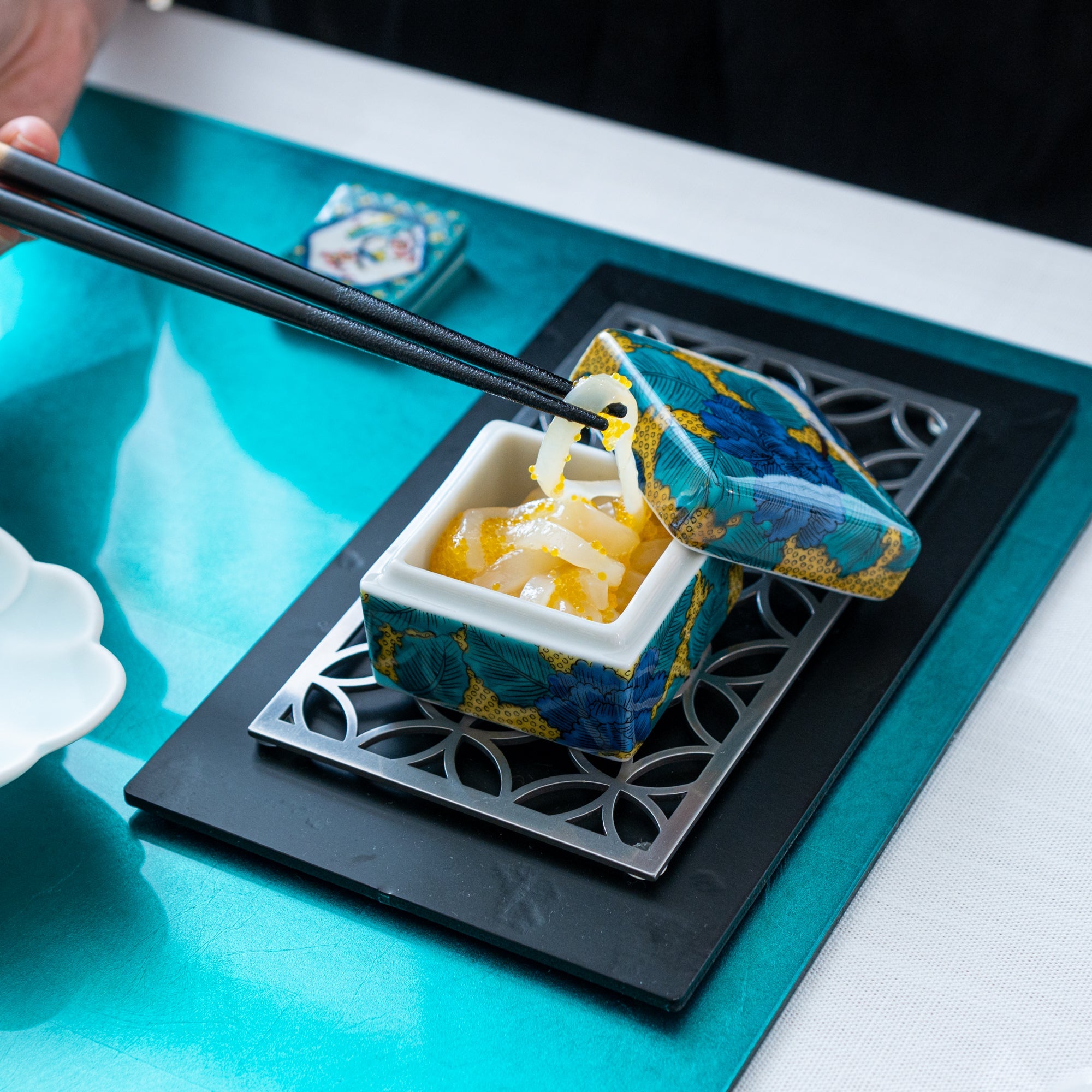
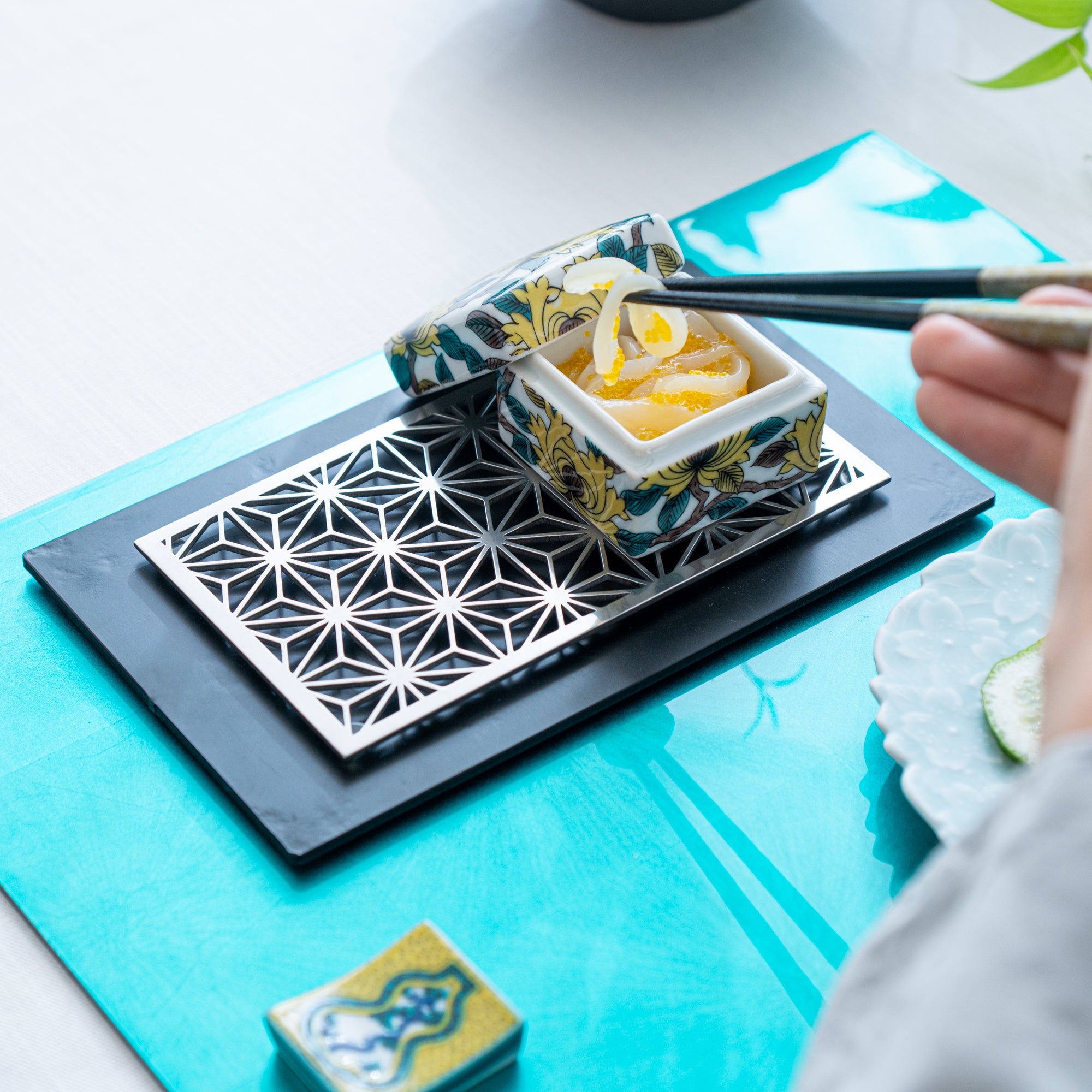
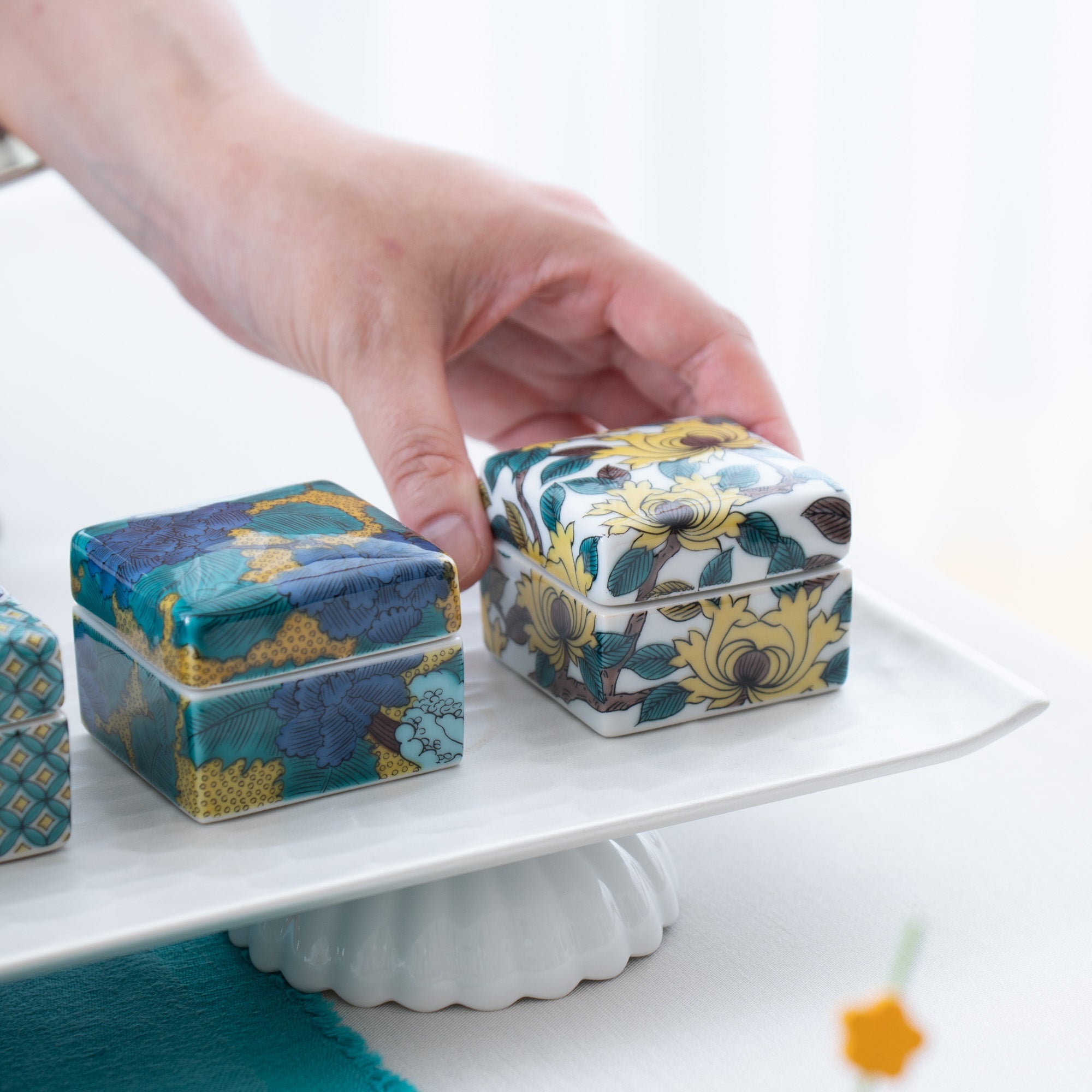
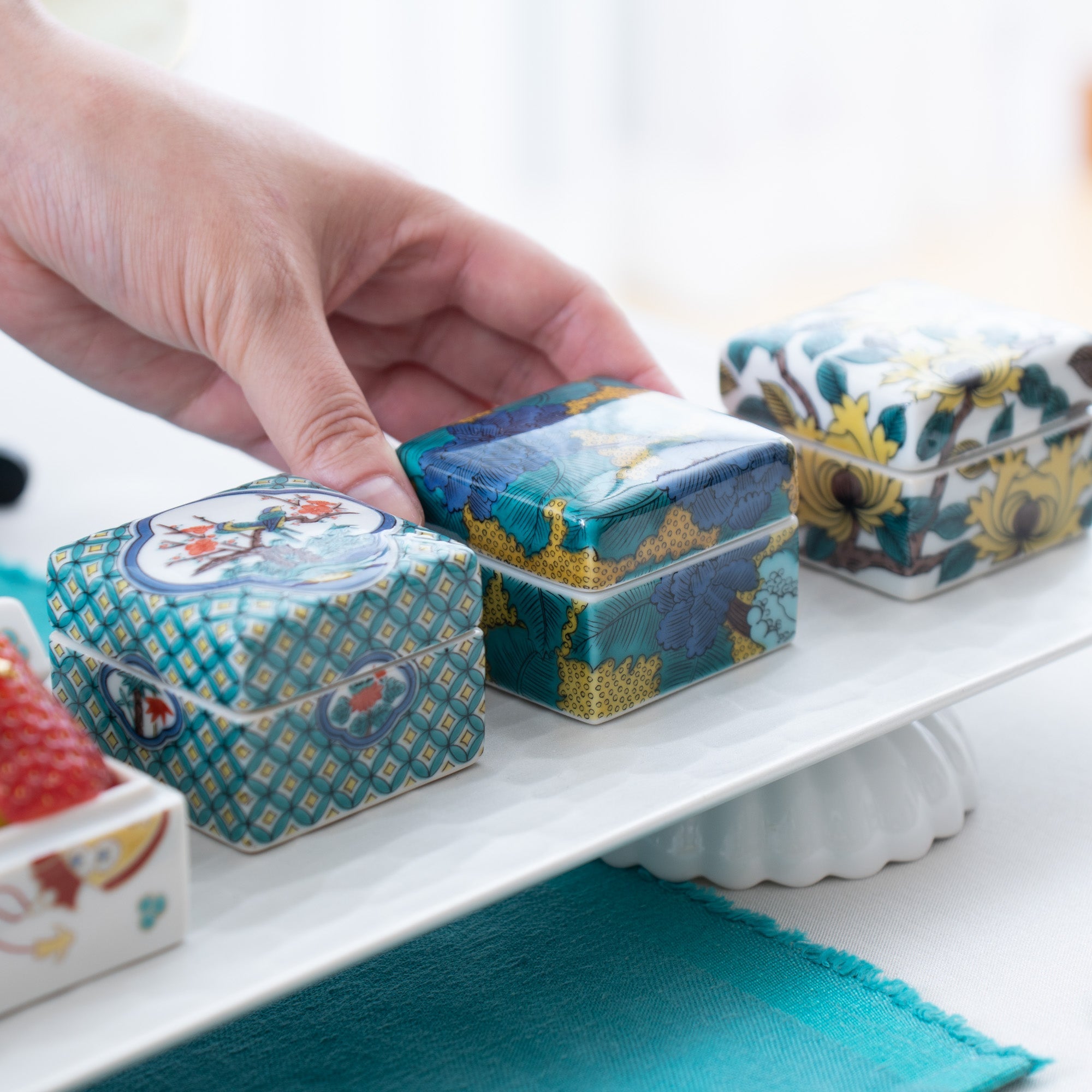
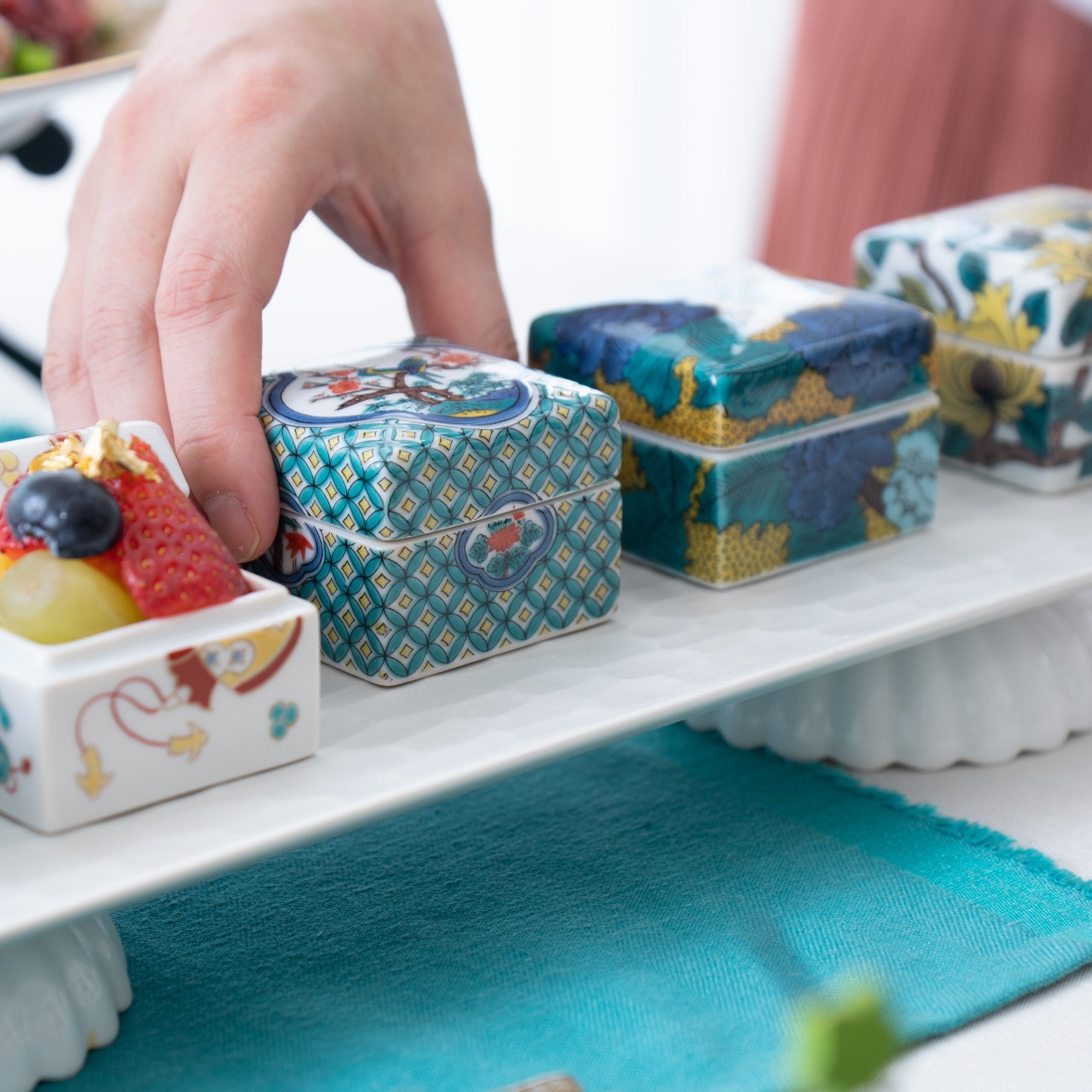
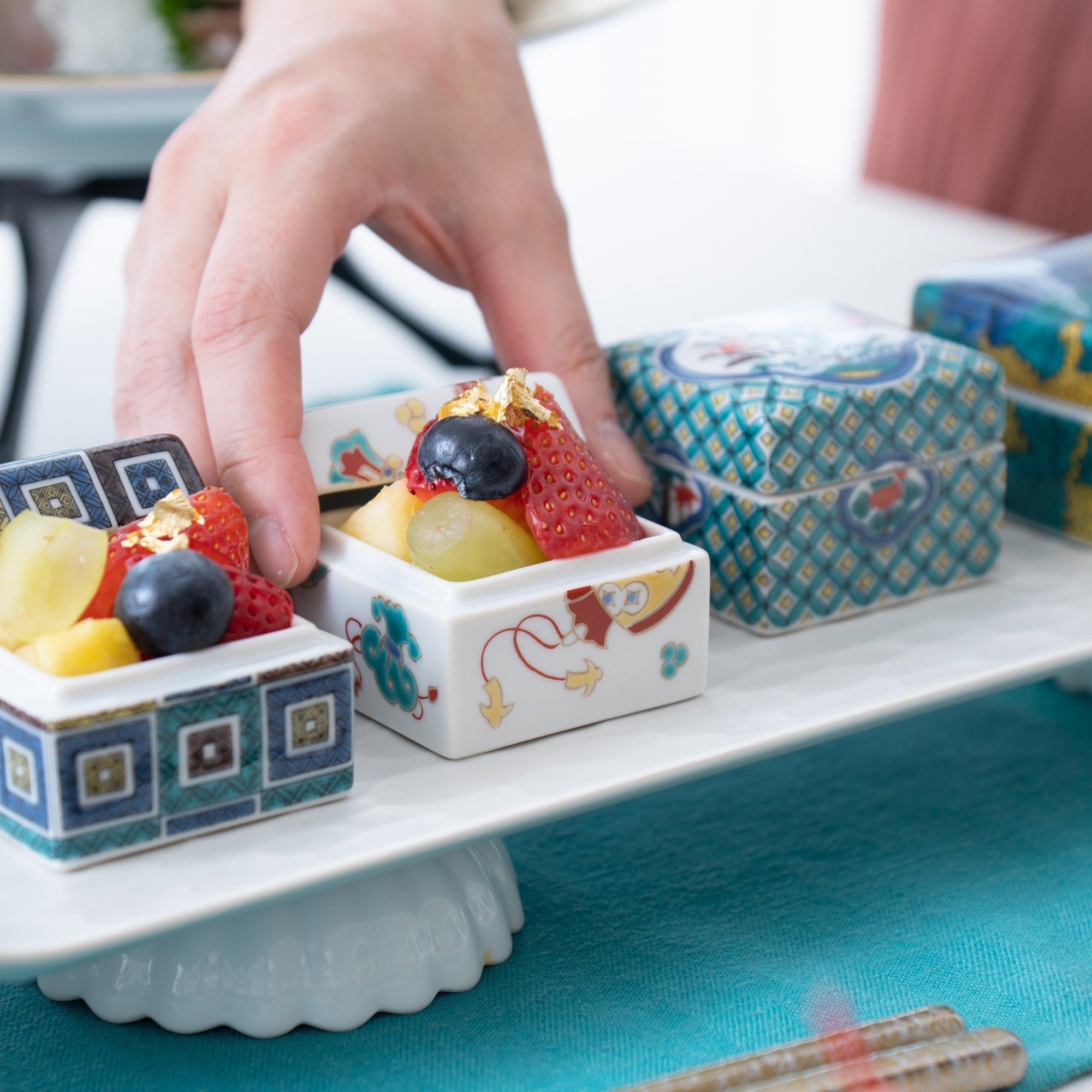
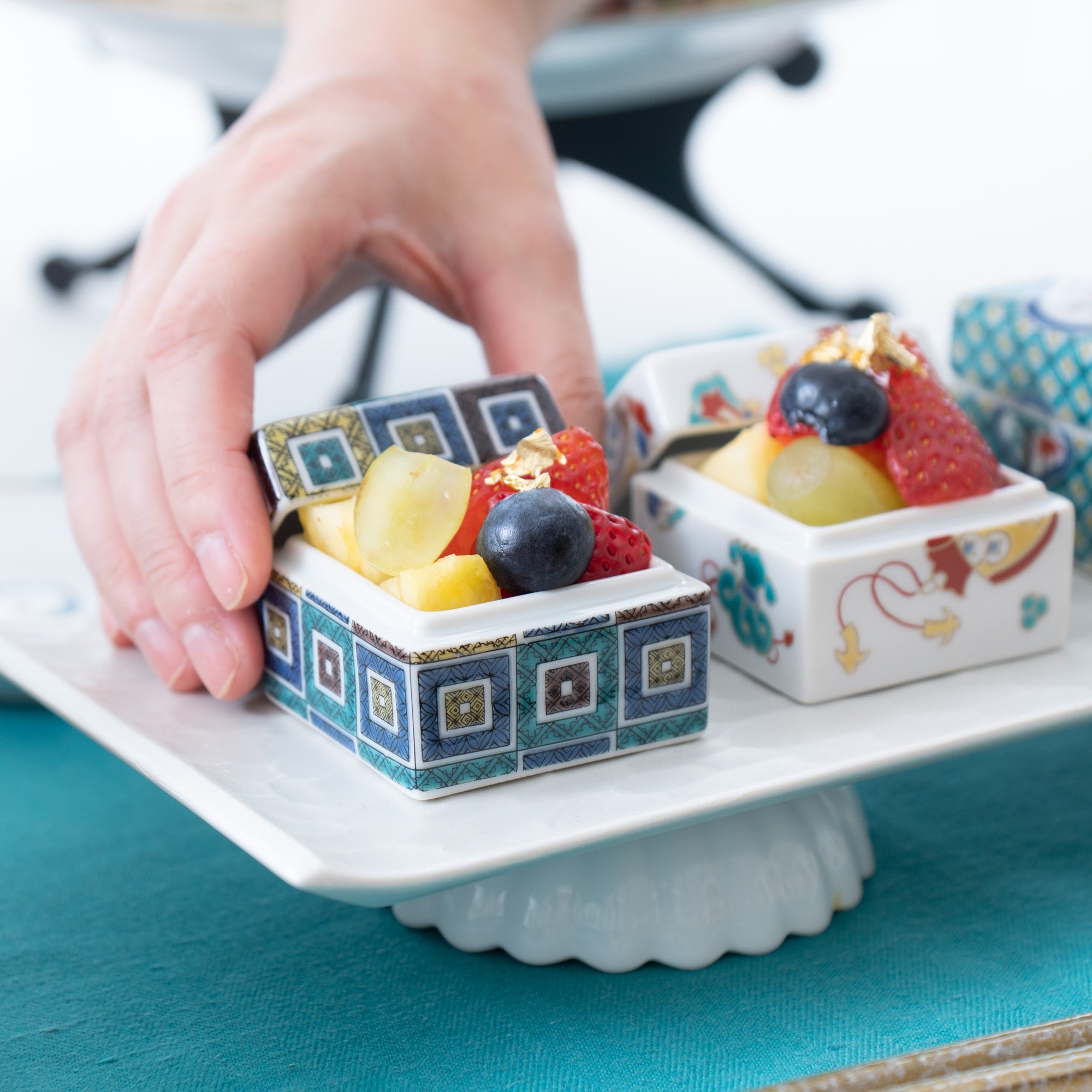
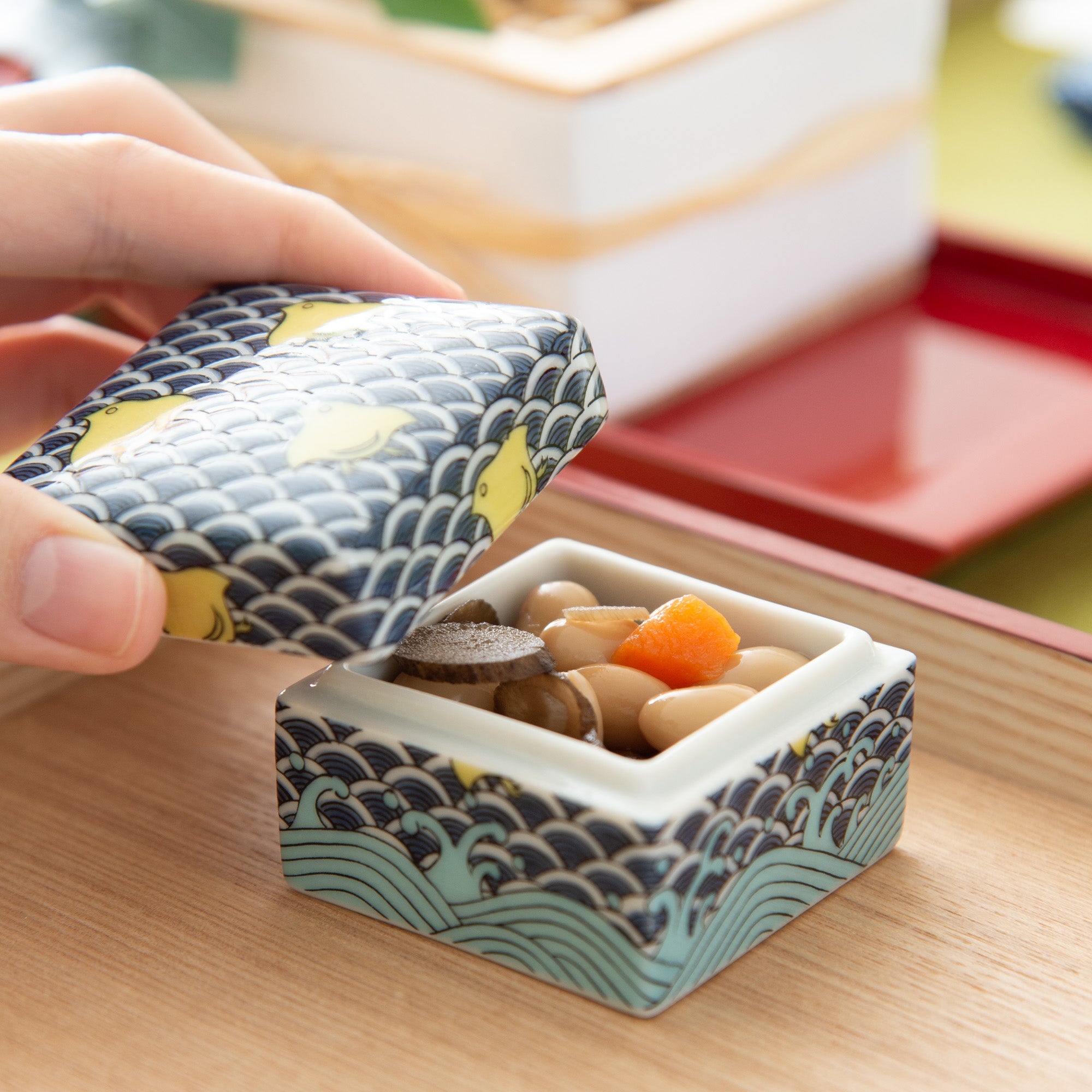
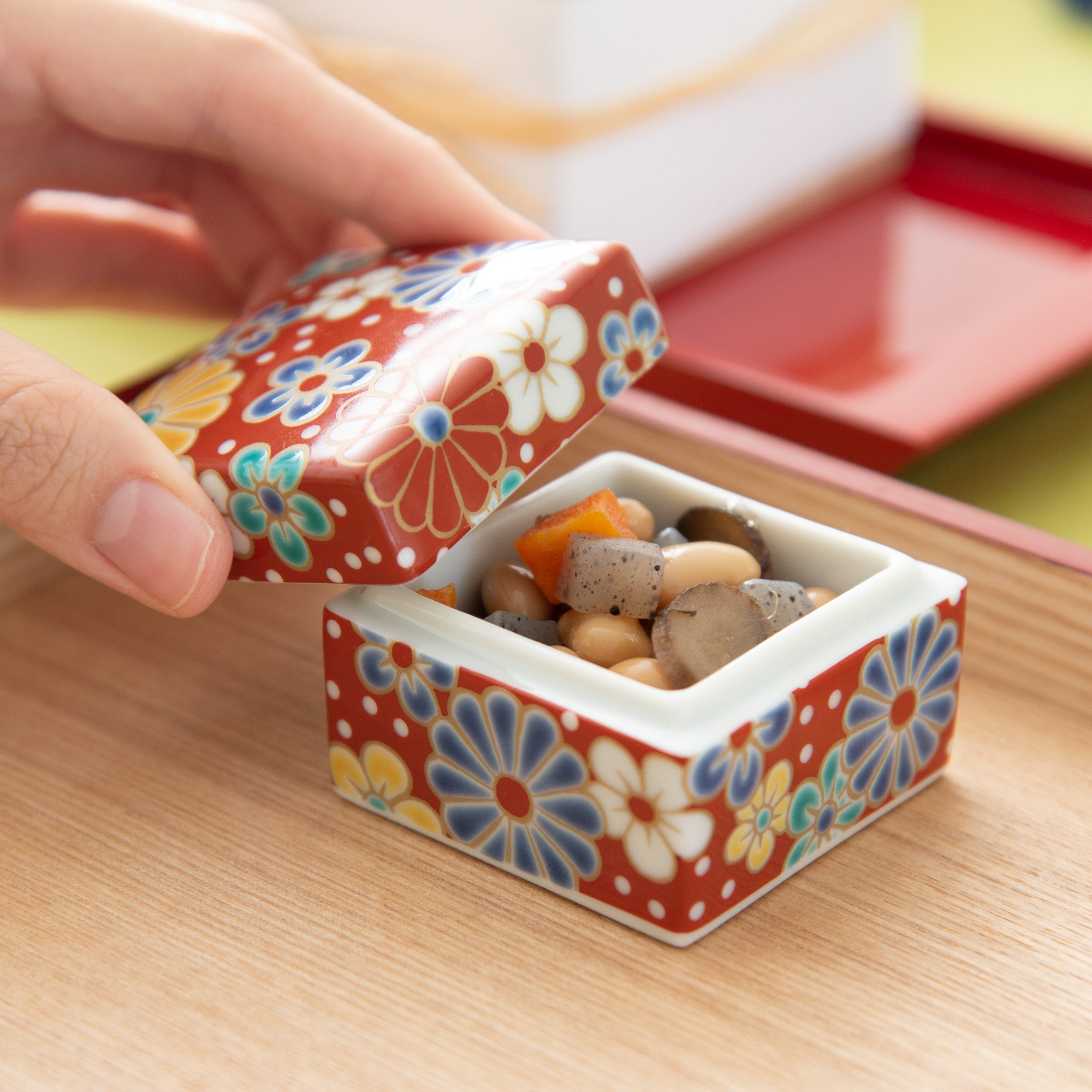
Kutani Colors Small Box
Estimated Shipping Widget will be displayed here!
This Japanese porcelain box features traditional Kutani ware patterns in gosai colors—red, yellow, green, purple, and dark blue. With 10 different patterns available, each piece showcases the rich artistic heritage of Kutani ceramics.
Designed as a condiment or seasoning container, it also adds a unique touch to table settings when placed on a larger plate. Additionally, its elegant design makes it a beautiful decorative piece on its own, perfect for use as an accessory case.
A wonderful gift for those who appreciate art, craftsmanship, and timeless Japanese tradition.
DETAILS
| Quantity | 1 |
| Size | 5.4 cm (2.1 in) x 5.4 cm (2.1 in) x H 4.5 cm (1.8 in) |
| Material | Porcelain |
| Microwave | Yes |
| Dishwasher | Yes |
Maker / Brand
Seikou Kiln, founded in the early Taisho era (1912–1926 CE) in Nomi City, Ishikawa Prefecture, has long been dedicated to the art of Japanese overglaze painting for Kutani ware. Through years of research, the kiln perfected a high-quality technique for transferring designs and patterns using in-house printed sheets. This method preserves the transparency of glassy glazes and the depth of thick overglaze paints, achieving the same richness as traditional hand-painting. Their work has earned prestigious accolades, including recognition in the Japan Tourism Agency's Charming Japanese Souvenir Contest.
Crafts
Kutani ware is a pottery produced in the Kaga region of Ishikawa Prefecture and it has a history of over 350 years. It is characterized by the heavy brilliance of the five colors of green, yellow, red, purple, and navy blue that are applied to the bold and daring lines. Its long history has evolved through the tireless efforts and enthusiasm of people who have sought innovation while maintaining tradition.
The beauty of the various styles and methods of painting is known as "Japan Kutani" and is highly regarded around the world.
Choose options






























Boxes
Beautifully decorated and versatile, Japanese boxes bring a touch of traditional charm to your home or office decor. This handcrafted collection includes candy boxes and spice containers, ideal for holding sweets and condiments. Their elegant and multifunctional designs make them perfect for repurposing as jewelry boxes, desk organizers, or stylish storage for small essentials.
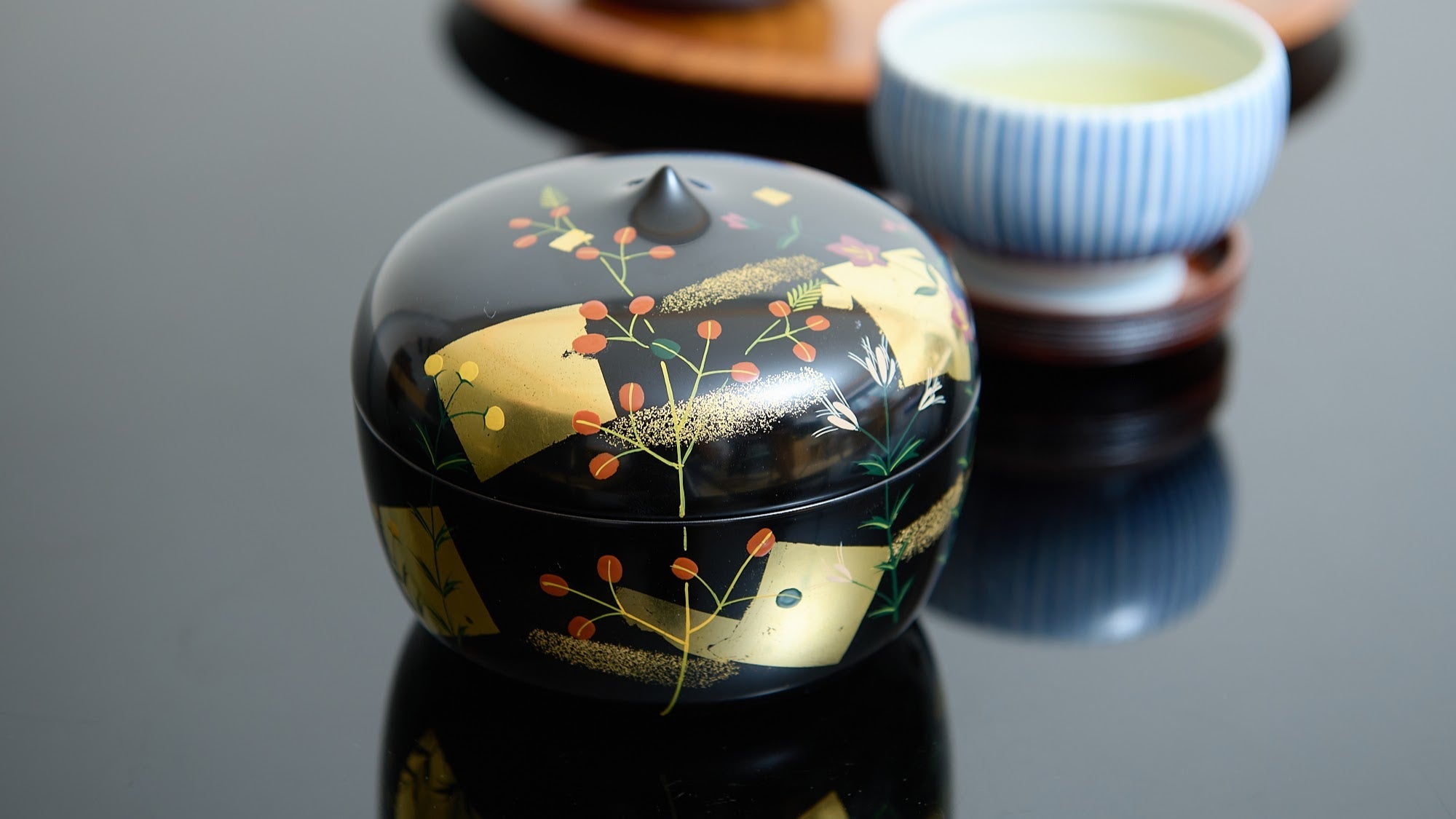
Setsubun: Celebrating Japan's Unique Springtime Festival
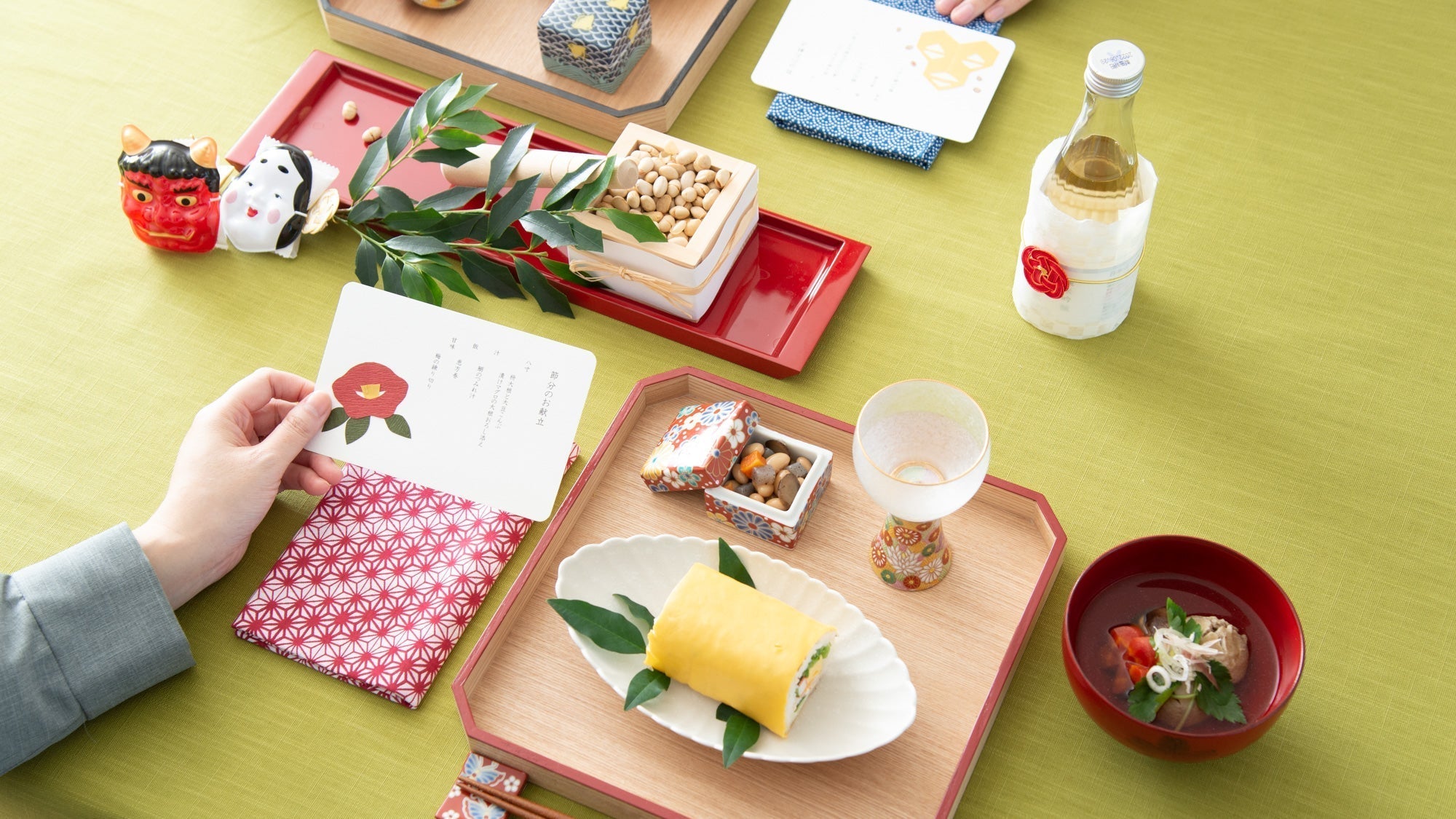
Kutani Elegance: An Exquisite Table Decor for a Sophisticated Office Party
